SIMPLE / SMART / SUSTAINABLE / STORIES
SECRETS OF THE SALT MARSHES
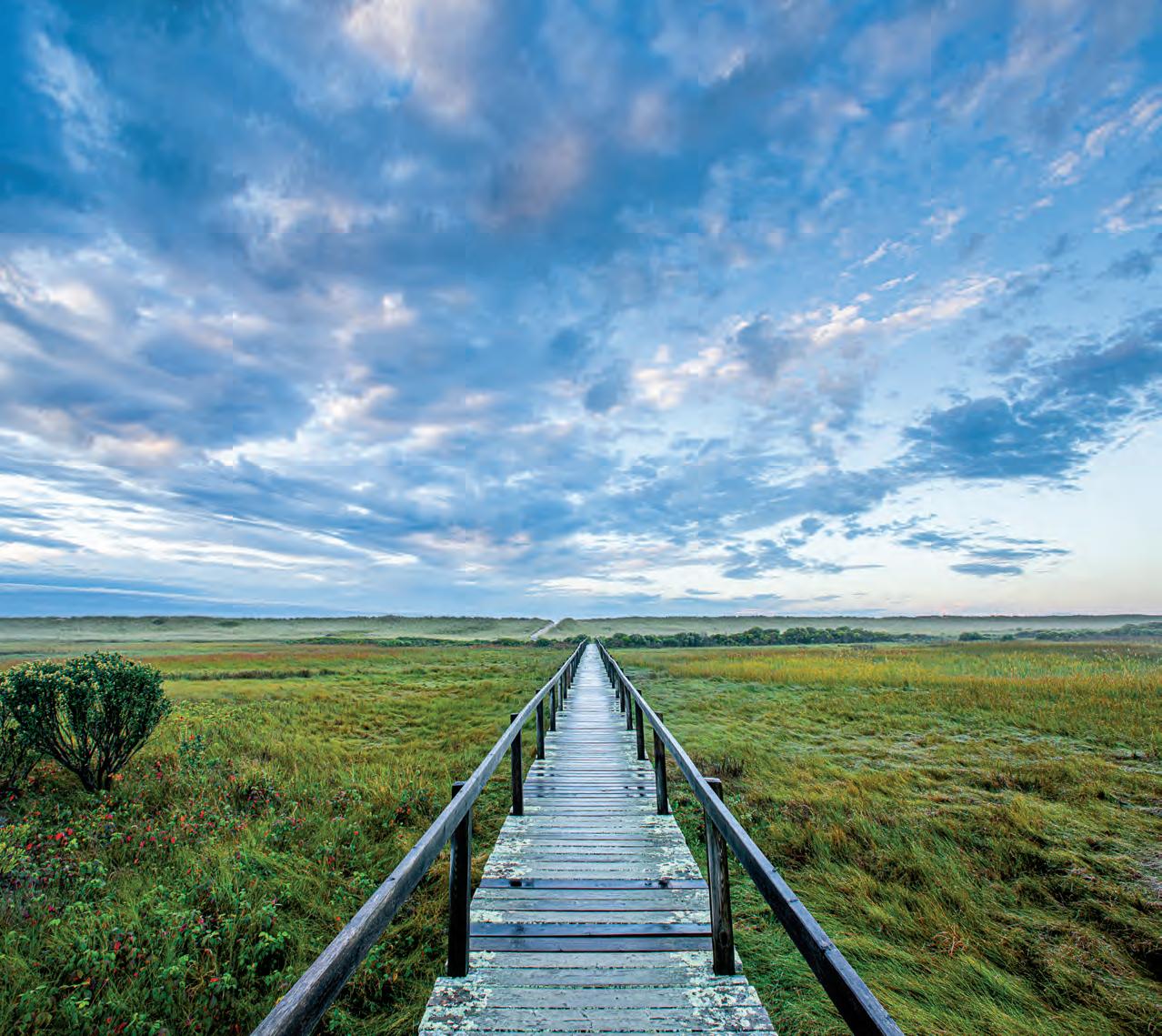
EAT FROM YOUR GARDEN YEAR-ROUND
A VERY GREEN HOUSE IN THE WOODS Built like a Lasagna
CURRIER + BELUSHI = CRUISING
WHATS SO BAD ABOUT COFFEE?
MARTHA’S VINEYARD / SPRING 2023 MARTHA’S VINEYARD / SPRING 2023
SIMPLE / SMART / SUSTAINABLE / STORIES
Planet-friendly
TM
John Abrams · Fruit Tree Guilds · Finches ·
Toilets
@bluedotlivingmv
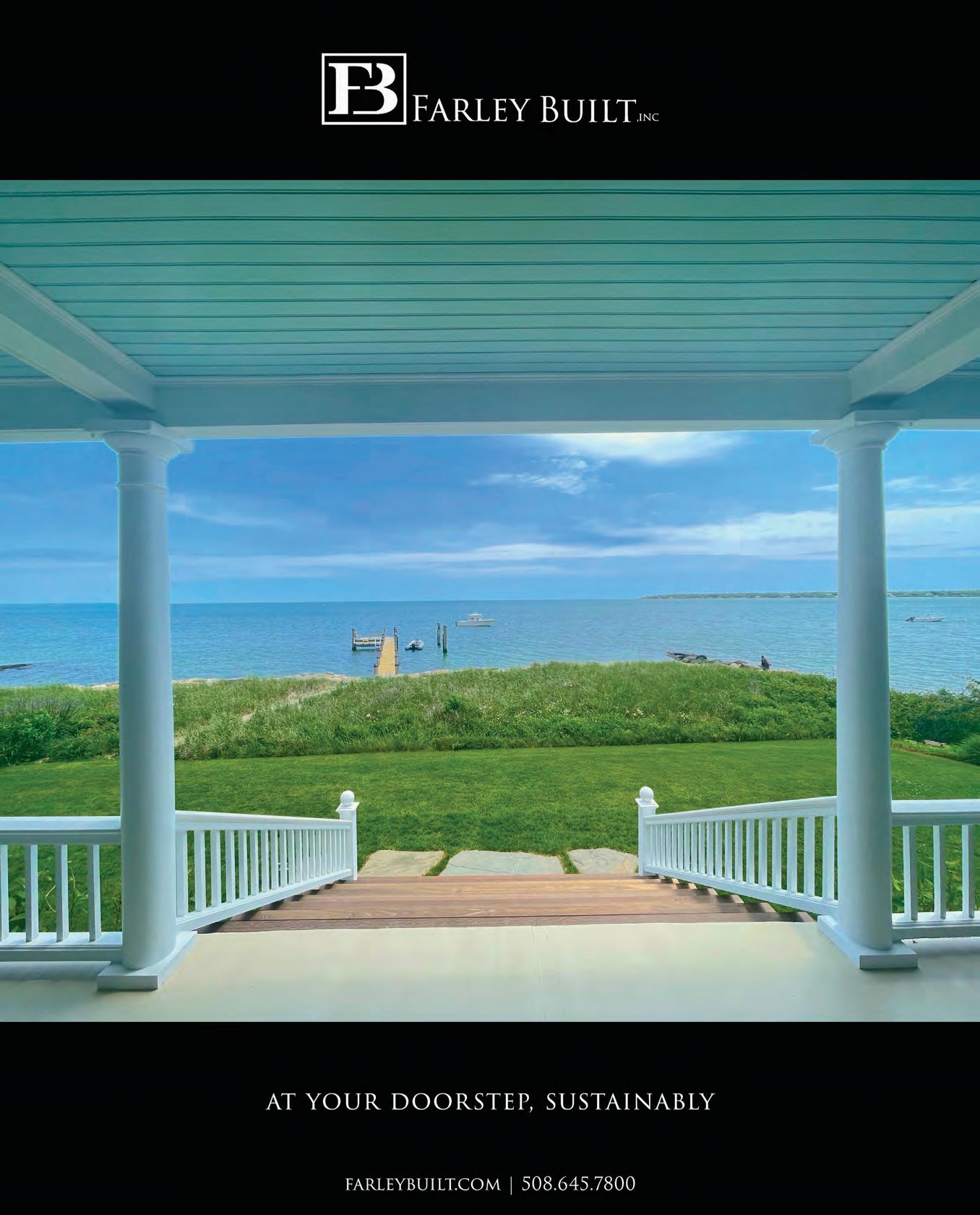



BDL 1 marthasvineyard. .com
DEER, TICK & MOSQUITO CONTROL!
(508)627-2928 | MV@oh-DEER.com
oh-DEER.com/locations/MV

• SAFE FOR YOU, YOUR FAMILY & PETS!
• KILLS TICKS & MOSQUITOS ON CONTACT.
• AN EFFECTIVE ‘GREEN’ ALTERNATIVE TO PESTICIDES & CHEMICALS
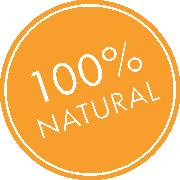
ohDEER offers you and your family a proven and safe solution to control ticks and mosquitoes so that you can enjoy your yard. Our products are true all-natural repellents that contain no pesticides or chemicals of any kind.
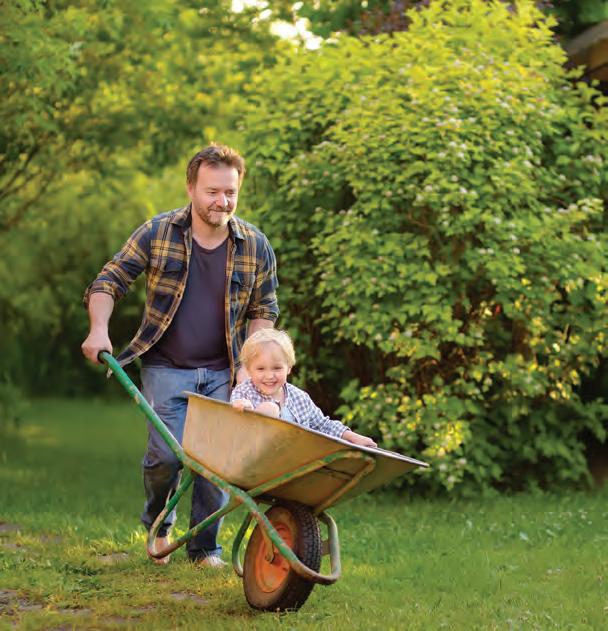
Look again at that dot. That’s here. That’s home. On it everyone you love .” –Carl Sagan
President Victoria Riskin
CEO Raymond Pearce
Editor Jamie Kageleiry, editor@bluedotliving.com
Senior Writer Leslie Garrett
Copyeditor Laura Roosevelt
Creative Director Tara Kenny
Design/Production Whitney Multari
Digital Projects Manager Kelsey Perrett
Social Media/Digital Projects Julia Cooper
Contributing Editors Mollie Doyle, Catherine Walthers Ad Sales adsales@bluedotliiving.com

Contributors, this issue Randi Baird, Geoff Currier, Mollie Doyle, Sheny Leon, Gwyn McAllister, Sam Moore, Alison Shaw, Catherine Walthers
Bluedot and Bluedot Living logos and wordmarks are trademarks of Bluedot, Inc. Copyright © 2023. All rights reserved.
Bluedot Living: At Home on Earth is printed on recycled material, using soy-based ink, in the U.S.
Bluedot Living magazine is published quarterly and is available at newsstands, select retail locations, inns, hotels, and bookstores, free of charge. Please write us if you’d like to stock Bluedot Living at your business. Editor@bluedotliving.com
Sign up for the Martha’s Vineyard Bluedot Living newsletter here, along with any of our others: the BuyBetter Marketplace, our national ‘Hub” newsletter, and our soon-to-be-launched Bluedot Kitchen newsletter: bit.ly/Bluedot-Newsletters
Subscribe! Get Bluedot Living Martha’s Vineyard and our upcoming Bluedot GreenGuide mailed to your address. It’s $40 a year for all four issues plus our Green Guide, and as a bonus, we’ll email you a collection of Bluedot Kitchen recipes. Subscriptions@bluedotliving.com
Read stories from this magazine and more at marthasvineyard.bluedotliving.com
Find Bluedot Living on Twitter, Instagram, Facebook, and YouTube @bluedotliving
2 MARTHA’S VINEYARD /SPRING 2023
BDL • OUR TEAM
• • • • • •
ENJOY MORE
OUTSIDE! “
TIME
14 Secrets of the Salt Marshes
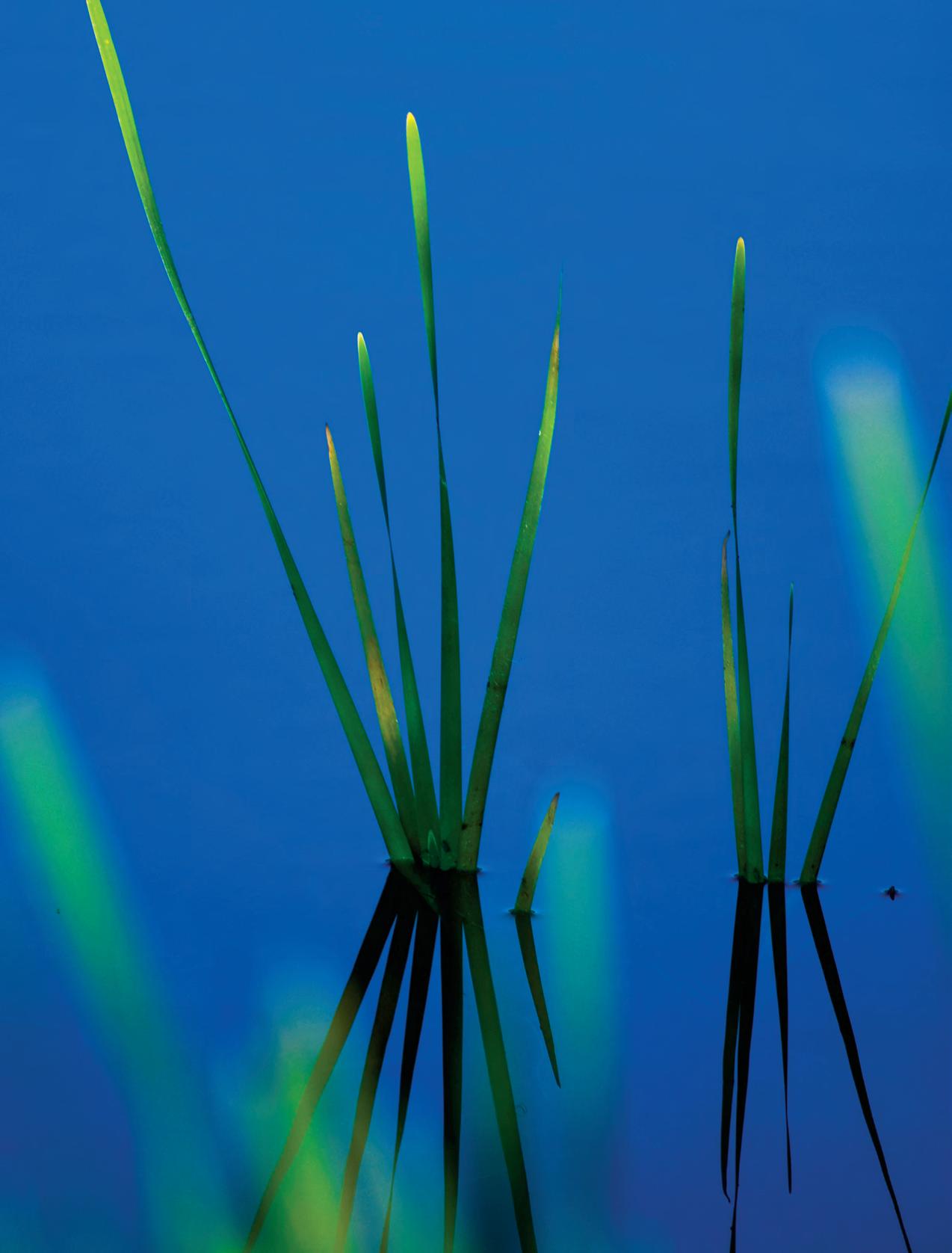 By Sam Moore
By Sam Moore
The marsh is both boundary and buffer — at the edge of the sea, it dampens wave action from storms, sequesters carbon, filters water, offers finfish and shellfish a protected nursery, and draws a sharp line at the end of many coastal walks.
21 Edible Backyards: How to Plant a Fruit Tree Guild
By Catherine Walthers
Roxanne Capitan describes a better way to grow fruit trees, relying on plants instead of fertilizers and fungicides.
30 The Bones of Green Design
By Mollie Doyle
A delightful, net-zero home in the woods, built like a lasagna.
40 What’s So Bad About Coffee?
By Sam Moore
In the Ottoman empire, where coffee gave rise to hundreds of lively coffeehouses, the drink was periodically outlawed for its rabble-rousing tendencies. These days, we just want to make sure our coffee has been produced sustainably and with fair labor.
Departments
12 Dear Dot Do your House Finches have eye problems? Our eco-advice columnist finds the answers.
26 Garden to Table
By Laura Roosevelt
A new column from an ace gardener (and cook). Here’s how to start planning (and planting) to eat from your garden all year long.
36 Room for Change: The Toilet By Mollie
Doyle
Did you know a single leaky toilet can waste up to 180 gallons of water per week? We have some thoughts.

46 Cruising With Currier
Our intrepid reporter zips around the Island with Judy Belushi and her Chevy Volt.
48 Local Hero: We nominate John Abrams, for the years he has dedicated to building sustainable homes (and communities).
CONTENTS
Upfront 4 Editor's Letter 5 What.On.Earth. Earth Day!
Home
6 Buy Better:
Goods/Homemade on MV 10 Field Note: Climate Action Fair 11 In a Word: Rewilding Features
Find Us! Sign up for our biweekly Martha's Vineyard Bluedot newsletter: bit.ly/Bluedot-newsletter More online At marthasvineyard.bluedotliving.com and Bluedotliving.com How to Get Rid of (Almost) Anything The Bluedot Buy Better Marketplace Lots More ‘Dear Dots’
PHOTO THIS PAGE: ALISON SHAW
Cover photo: Up-Island, by Alison Shaw
Dear Bluedot Living Readers,

“Figure out where your passion really is, and put your time in that passion,” John Abrams says in our “Local Hero” story on page 48. “We don’t have to change big things — we only have to change little things. If a lot of people change little things, that adds up … ”
John’s been working hard on building sustainable housing for years at South Mountain Company, and for almost as long helping to build a sustainable community on Martha’s Vineyard — most recently as one of the driving forces behind the creation of the Housing Bank. Beyond lauding John’s vision and generosity, we agree: A lot of people doing little things can make for big changes.
We hope that this magazine helps you make those little, every-day changes that together can make our planet healthier — with the things you plant (see Laura Roosevelt’s new Garden to Table column, on page 26; and Roxanne Kapitan’s plan for growing fruit trees without fertilizer, page 21); the way you drink your coffee (What’s So Bad About Coffee? Page 40); and even what toilet you decide to buy (Room for Change: The Toilet, Page 36). Please send us ideas — for stories you’d like to see, people we should know about, and maybe that cool way you upcycled something you would have tossed. Write me at jamie@bluedotliving.com.
Our Bluedot staff is growing! Ray Pearce has been named CEO of Bluedot, Inc. Ray spent more than 30 years at the New York Times — he was part of the team that launched the Times’s digital subscription business. Alison Mead will help produce our websites and will wrangle the digital assets we need for our rapidly growing stable of newsletters. You might know Ali from her time at Martha’s Vineyard Magazine and the Vineyard Gazette. Lucas Thors, an editor and reporter most recently at the MVTimes, will join our staff as a reporter/ web producer. He’ll to also help us run our Bluedot Institute program, where he’ll be finding cool climate projects by students all over the country. Island poet and writer Laura Roosevelt is our new copyeditor; and graphic designer Whitney Multari creates our illustrations, ads, and newsletters (along with this magazine). Josh Katz is the man you need to talk to if you’d like to get your message across to our many thousands of ecoconscious readers with an ad in this magazine or our biweekly newsletters (write him at adsales@bluedotliving.com). (We really appreciate your support.)
Have a great spring, and we’ll see you at the Climate Fair at the Grange on May 7, from 12 - 4 pm.
Oh — and don’t forget to sign up for the Bluedot Living MV newsletter: bit.ly/MV-NEWSLETTER, and all our other newsletters (LA, San Diego, BuyBetter Marketplace, Brooklyn): bit.ly/Bluedot-Newsletters.
 –Jamie Kageleiry
–Jamie Kageleiry

EDITORS' LETTER 4 MARTHA’S VINEYARD /SPRING 2023
Bluedot Living, right in your inbox! Get more yummy sustainable recipes, BuyBetter suggestions from our marketplace editor, great stories of locals tackling climate change, and advice from Dear Dot. Sign up here for our Martha’s Vineyard Bluedot Living newsletter, or our Hub (national) newsletter or any of our other locations: bluedotliving.com/newsletters ® Every
SIMPLE / SMART / SUSTAINABLE / STORIES
other Sunday, Bluedot Living Martha’s Vineyard will share stories about local changemakers, Islanders’ sustainable homes and yards, planet-healthy recipes and tips, along with advice from Dear Dot. Did your friend send you this? Sign up for yourself here.
What. On. Earth.
Earth Day Matters
“But on April 22, 1970, after years of mounting concern and hard work, the first-ever Earth Day took place, and a new commitment to action took hold. Thanks in no small part to campaigns begun that day, our air, water, and land are in far better shape now than 45 years ago en as our population and economy have steadily grown.”
–John Kerry, April 21, 2015
1. Amount of oil in gallons per hour spilled for the first 11 days of the Union Oil off the Santa Barbara coast in January 1969: ~9,000
2. Amount of oil in gallons that had spread over 35 miles by the time Union Oil stopped the spill: 3 million
3. Where that Union Oil spill ranked in 1969 on list of the worst oil spills in U.S. history: 1
4. Where that Union Oil spill ranked 50 years later on list of the worst oil spills in U.S. history: 3
5. Number of years after Gaylord Nelson (U.S. Senator from Wisconsin) witnessed that Santa Barbara oil spill that he helped launch the first Earth Day: 1
6. Number of birds that died from the oil spill, according to the official count: 3,700
7. Number of birds that died from the oil spill, according to scientists: 9,000
8. Amount of straw in tons that the oil company used to try and mop up the spill: 3, 000
9. Number of citizens in millions who participated in the first Earth Day on April 22, 1970: 20
10. Percentage of the U.S. population that participated in the first Earth Day on April 22, 1970: 10
11. Number of months following the 1970 election that the Clean Air Act was passed unanimously in the Senate with just one dissenting vote in Congress: 1
12. Number of years Vineyard Conservation Society has been holding beach cleanups on Earth Day on Martha’s Vineyard, including this year: 31
13. Amount of trash cleaned up in a typical Earth Day beach cleanup on-Island: “Multiple tons”
SO WHAT CAN YOU DO?
Vineyard Conservation’s Annual Beach Cleanup: Saturday, April 22, 10 am to noon.
VCS will hold the first annual Earth Day Festival at the MV Museum on Saturday, April 22, from noon to 4 pm. More than a dozen local conservation organizations will provide educational presentations, and fun activities for the whole family to enjoy. All beach volunteers are encouraged to come and enjoy hot soup, bread, and other goodies. As a bonus, entry to the Museum is free! (MV Museum will also have food available for purchase in their cafe for those who did not clean a beach.)
Find out where you can meet to clean up those beaches: vineyardconservation.org/events
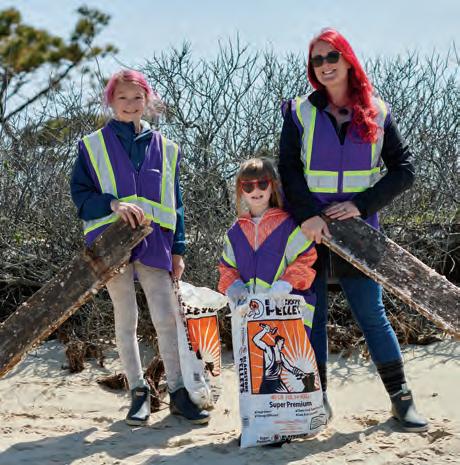
Sign up for VCS's newsletters to find out how to clean a beach in your town every month: bit.ly/VCS-newsletter

5
.com
marthasvineyard.
1-8: Smithsonian Magazine; 9,10: NOAA; 11: The Seattle Times; 12,13: Vineyard Conservation Society
Sources:
PHOTO COURTESY VCS
Buy Better Beautiful Homegoods
MADE ON
MARTHA'S VINEYARD
The Glassworks is dedicated to offering internship opportunities to local students. They also bring in off-Island glassblowers every summer and run a visiting artist program. “It's beneficial for the community, as well as supporting the glassblowing community at large,” says Sideman, who adds that education is a major component of the business’ mission. “We have lots of different projects and special events going on throughout the year where people can watch and explore,” he says. “There are sometimes visitors — kids or adults — who come and hang out all day.”
Martha's Vineyard Glassworks
Since 1992, a team of professional glassblowers has been creating artisanal work at MV Glassworks on State Road in West Tisbury. The studio/shop offers both standard designs that they developed and make onsite at the studio, as well as unique sculptural works of art. Each piece — from glasses, vases, and bowls to decorative tabletop ornamental pieces like an elegant clear glass pear or a colorful set of pumpkins — is a marvel of design and craftsmanship.
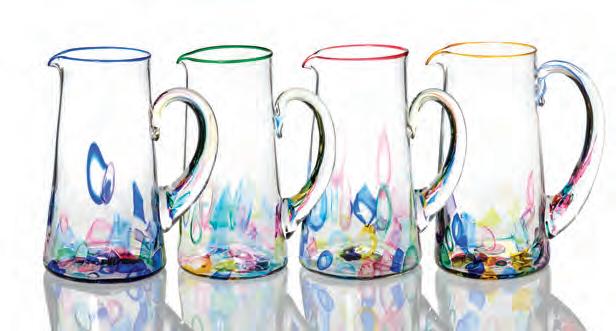
A visit to the studio shop offers a chance to see the artisans at work. The Glassworks currently employs four full-time glassblowers, all of whom have at least fifteen years of experience in the traditional craft. The business is divided into three sections — a shop and two galleries. The lower gallery features production works and design lines in multiple colors and size variations. The upstairs gallery offers a rotating selection of unique sculptural pieces.
Owners Andrew and Susan Magdanz have been in the glass business since the early 1970s. After running a private studio in Cambridge for many years, in 1992 they decided to bring locally made glass to the island that has been their summer home for decades.
In recent years, they have put into place some sustainable practices to reduce the business' carbon footprint. “We used to power our equipment with propane, but the technology for electric furnaces has advanced dramatically, and we switched to electric in 2021,” studio manager Wil Sideman says. “Our primary energy source now is electric.”
Last year the Glassworks added solar panels to the roof to cut back on their grid usage. “It's something we felt very passionate about,” Sideman says.
Carol and Richard Tripp – Woolen Goods
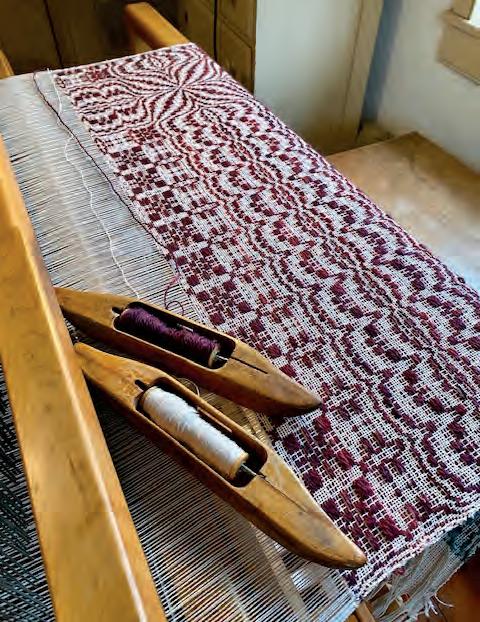
Not only does Carol Tripp hand loom all of her blankets, throws, shawls, ponchos and scarves, but she also handles every aspect of production from farm to market. Tripp and her husband, Richard, start by raising the sheep. Then she spins and dyes the wool and weaves it on a handloom (as opposed to a power loom).
According to Tripp, all of these things make a difference in
BUY BETTER/MADE ON MARTHA'S VINEYARD • UPFRONT 6 MARTHA’S VINEYARD /SPRING 2023
the look and feel of the finished products. “Part of the cachet is that our wool is hand spun, and it looks hand spun. There's texture and a not perfectly standardized quality to it.”
Hand looming makes for softer, more resilient fabric due to less compact weaving. All in all, with the slight variations in texture and weave, Tripp's products are unique and as close to those made in an earlier era as possible.
The Tripps own a farm in Lakeville, where they are currently raising seventeen sheep. They have six more at their home in Vineyard Haven. The flock is made up of Border Leicester sheep, which Carol prefers for the quality, softness, and luster of their wool. At the off-Island farm, Carol operates a studio for production and also teaches weaving.
The Tripps bought the derelict Lakeville farm in the 1970s, rehabbed it themselves, and started raising sheep for meat and wool. Before that, the two had worked as public school teachers at a Zuni reservation in New Mexico. It was there that Richard learned traditional Navajo weaving techniques. The couple still incorporates Native American patterns into many of their designs.
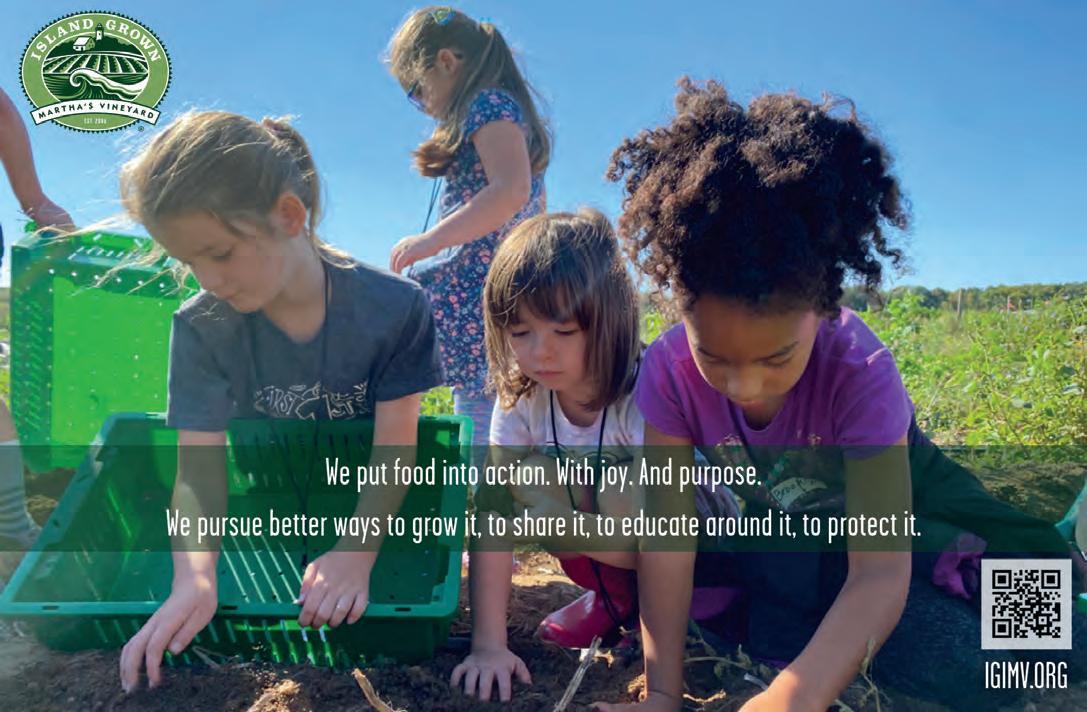
“I’ve always loved wool,” Carol says. “It's a battle, because people say that they're allergic or that it's scratchy, but if you use really good fleece, that's really not the case.” She also uses quality linens for some products and buys all of her dyes from a small company in Maine that sells non-toxic products, using only vinegar or salt for fixing.
“So much is made from petroleum products these days,” says Carol. “I like to keep everything as natural as possible.” You can get the Tripps’ woolen goods in season at the Chilmark Flea, and the Oak Bluffs Open Market.
SRS Grunden Pottery
Lovers of anything ocean themed will find numerous options for setting a Vineyard table at the SRS Grunden Pottery studio on the Vineyard Haven/Edgartown Road. Sherry Stevens-
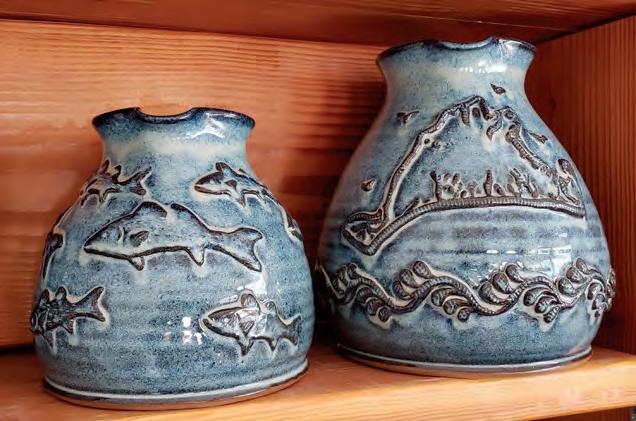
UPFRONT • BUY BETTER/MADE ON MARTHA'S VINEYARD 7 marthasvineyard. .com
Interested in making your yard a haven for wildlife?
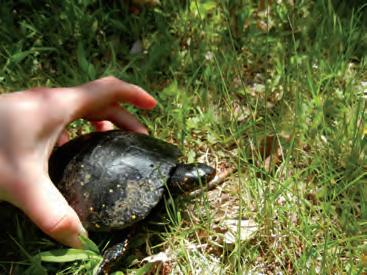
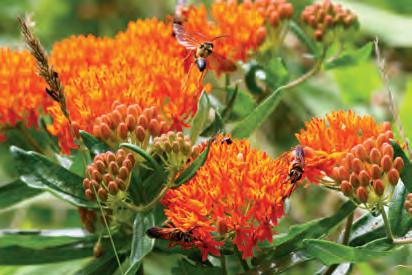
Grunden has been selling her hand-made ceramic wear from her home studio for more than ten years. There, you'll find a variety of attractive bowls, plates, platters, mugs and pitchers in Islandcentric shades of blue or brown.
Stevens-Grunden's work tends toward the traditional — sturdy and utilitarian. What sets her apart from other potters is the decorative work that embellishes many of the pieces. Fish, scallops, oysters, seahorses, and turtles adorn a series of mugs and pitchers; other designs include a simple heart, an outline of the Island with a wavy border, and a series of images of three different small invasive species — the clinging jellyfish, the vase tunicate, and the clubbed tunicate. Tunicates are small invertebrate sea animals that can be found attached to rocks, pilings and other hard surfaces; the clinging jellyfish clings to sea vegetation and has a potent sting.
These invasive species may seem an odd choice for an artist, but Stevens-Grunden's husband, Dave, is the former Oak Bluffs shellfish constable, and he suggested that these non-native creatures would add something unique to his wife's pottery line. She notes that she is now teaching Dave the ropes, so it would seem that the two have combined their interests in the small cottage business.
The SRS pottery line also features ornamental pieces made by using molds made from actual scallop and oyster shells. These are mounted on bases and used as tabletop accent pieces.
After working for pottery studios in North Carolina and Connecticut, Stevens-Grunden spent six years doing production work in England before moving to the Island. She refers to her designs as “very English shapes,” with trimming on the bottom. These simple designs allow for decorative work, although most of the artist's pieces are unadorned and rustic. The decorative elements are molded separately and added on, providing texture and a three dimensional look.

Join the Natural Neighbors Network


We'll visit your yard and give you site specific recommendations to create shelter, water, and food for pollinators, birds, and other wildlife. A site visit is free, and recommendations are designed to fit your needs and resources.
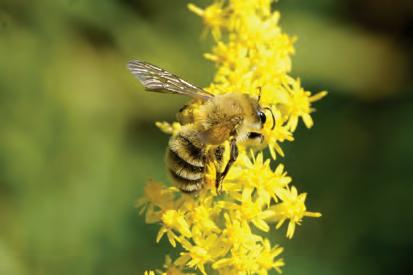

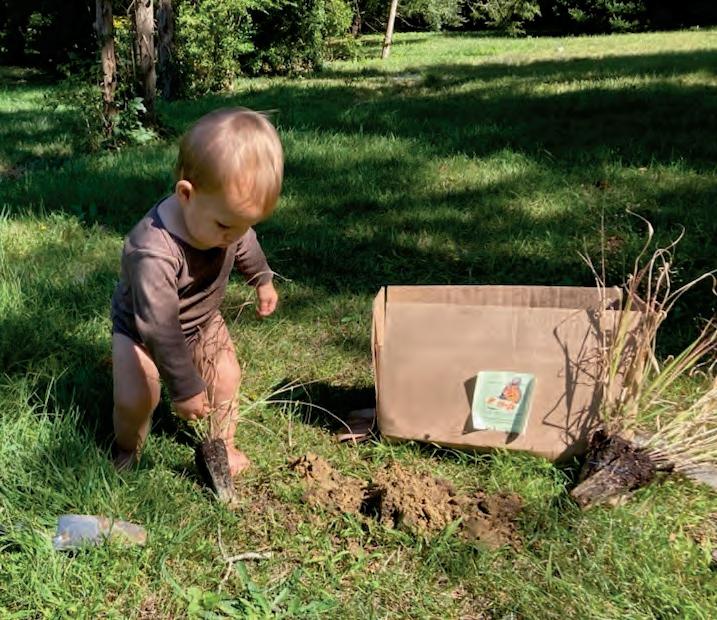
To sign up, contact Rich Couse rcouse@biodiversityworksmv.org
(508) 338-2939 office
The Oak Bluffs based couple sell their pottery from their studio/shop on their property and also at the Chilmark Flea Market and Oak Bluffs Open Market.
Shady Lady Lampshades
Debbie Kelly offers a unique way to add some personality to any décor. She creates one-of-a-kind lampshades using vintage fabrics in a variety of designs. Under the brand name Shady Lady, Kelly sells shades in all shapes and sizes featuring patterns ranging from mid-century modern to mod 1960s to rustic designs made from old grain and produce sacks.

BUY BETTER/MADE ON MARTHA'S VINEYARD • UPFRONT 8 MARTHA’S VINEYARD /SPRING 2023
Her most popular design is made from a fabric print of the old Eldridge's map of Martha's Vineyard — the perfect choice for any home with a maritime theme.
“What makes it really fun and challenging is finding interesting fabrics,” Kelly says; she scours yard sales, antique stores and thrift shops for colorful and unique designs. Some of her favorite fabrics include vintage barkcloth (a nonwoven fabric made from the inner bark of trees) and Marimekko fabric.

Kelly sells her shades at the Chilmark Flea Market as well as at Coastal Supply Company in Vineyard Haven. She has earned a loyal following at the flea market, where people often bring in their own lamp shades and/or fabrics for customizing and fitting.

The designer uses techniques that she learned on her own. She starts by molding adhesive styrene into the desired shape and then covers the panels with fabric and finishes with coordinating edging fabric along the seams. The artist notes that the styrene makes the shades heat resistant.

Kelly also sells tablecloths and napkins made from vintage fabrics. Her prices range from $20 for a night light to $80 for a large lampshade.
The self-taught artist loves the fact that she is bringing new life to discarded material. “It's recycling and turning something old into something new and modern,” she says.
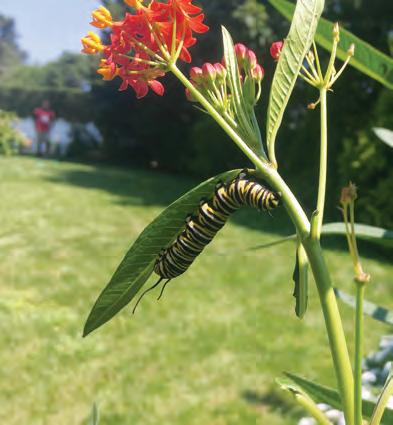
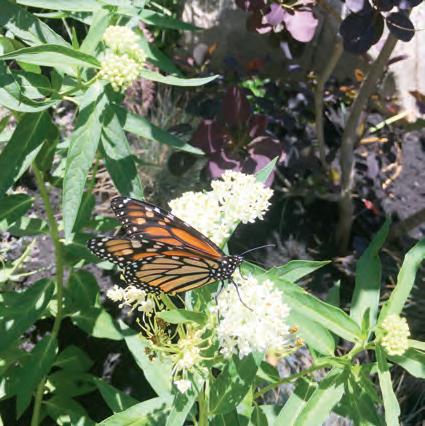
UPFRONT • BUY BETTER/MADE ON MARTHA'S VINEYARD 9 marthasvineyard. .com Native plant specialists and environmentally focused organic garden practices. Design • Installation • Maintenance (508) 645-9306 www.vineyardgardenangels.com Garden Angels Bring beauty to your property
FIELDNote

To: Bluedot Living

From: The Vineyard Way (Connected to our Past, Committed to our Future)

Subject: 2023 Climate Action Fair, Sunday, May 7
Protecting a small Island resort community won’t be a priority when major coastal cities are inundated with sea water. Here on the Island, we need to become as self-sufficient as possible. We can’t stop the sea from rising or the storms from doing damage, but every one of us can make a positive difference.
Reuse, Repair, Renew
• Everything we buy contributes to the climate crisis. Material goods consume natural resources, and shipping them to the Island burns fossil fuels.
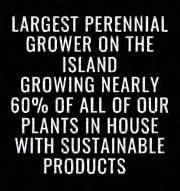
• Everything we throw away costs money to take off-Island
and pollutes someplace else.


• Every tree we cut down no longer provides shade or absorbs greenhouse gases.
• Every non-renewable source of energy we use makes matters worse.
• The theme of the 2023 V ineyard Climate Action Fair is Reuse, Repair, Renew.
Come to the fair to learn how to:
• repair your bicycles
• mend your clothes instead of throwing them away
• compost your food waste - help your garden grow and save the towns money trekking it off-Island

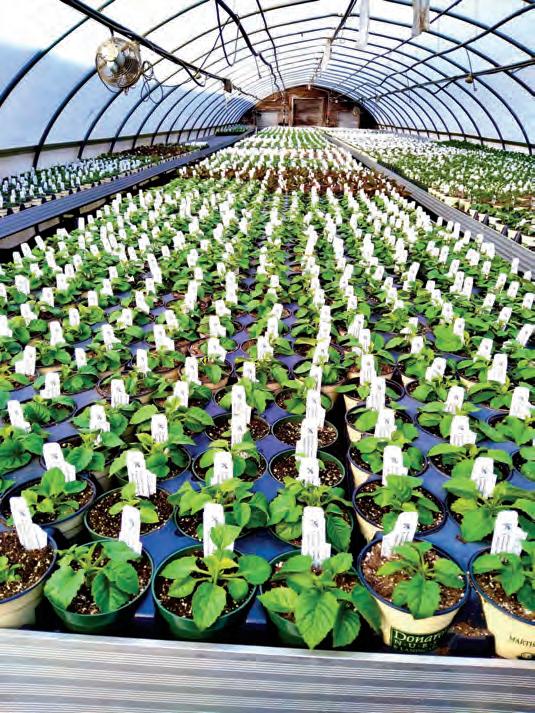
• landscape in a way that protects plants, trees and the biodiversity they provide
Talk to experts about:
• how you can afford to put solar panels on your home
• home energy efficiency
• And more:
• talk to electric vehicles owners about their cars
• learn about the Vineyard Climate Action Plan and the more than 200 actions it includes to build a climate-resilient Island
• revel in the beauty of the Vineyard Conservation Society’s student art contest submissions
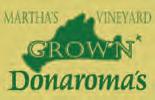
• eat, drink, dance a bit
• L ooking after the Island doesn’t have to be painful. It can be fun. It’s essential, and it’s everyone’s responsibility.
Climate Action Fair; Agricultural Hall; Sunday, May 7; 12 pm – 4 pm
Support Bluedot!
We love bringing you stories about Islanders addressing climate change. Generous contributions from readers such as you helps us do this. Make a one-time, monthly, or annual contribution here.

https://bit.ly/mv-bdl-member


10 MARTHA’S VINEYARD /SPRING 2023
FIELD NOTE
we’ll email you a downloadable collection of Bluedot Kitchen Recipes
And
“We must rewild the world,” said none other than Sir David Attenborough, natural historian and creator of iconic nature documentaries.
Which means … what exactly? I think back on a winter visit to Jackson, Wyoming, where an elk was window shopping in the town square, and to the Bangkok market where I watched a monkey wreak delightful (to me!) havoc, leaping from display to display.
An online dictionary uses “rewilding” in this sentence:

folks at Rewilding Britain, whose slogan is “Think Big, Act Wild.” The term itself was coined in the early 1990s by Dave Foreman, co-founder of Wild Earth magazine and The Wildlands Project, according to the podcast Rewilding Earth.
20, 2021. Though I missed the occasion, the rewilding initiative is growing like, uh, rewildfire. Originally conceived as a North-America-wide initiative focused on the three conservation Cs (cores, corridors, and carnivores), rewilding has expanded to South America, Europe, Africa, Asia, Australia, New Zealand, and more.
Rewilding? Might be a bit of a tough sell.
But in point of fact, rewilding isn’t nature encroaching on our human environment so much as it is giving nature back to its non-human inhabitants. It’s “restoring ecosystems to the point where nature can take care of itself,” say the
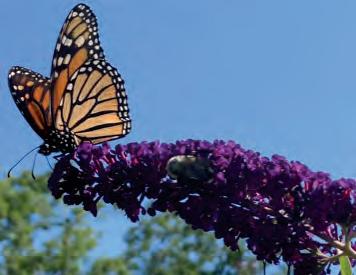
The Global Rewilding Alliance, a network of more than 125 organizations, was formed in 2020 to create and promote rewilding projects around the world. “We believe that the world can be more beautiful, more diverse, more equitable, more wild,” reads the group’s charter.
To that end, the Alliance organized the world’s first rewilding day on March
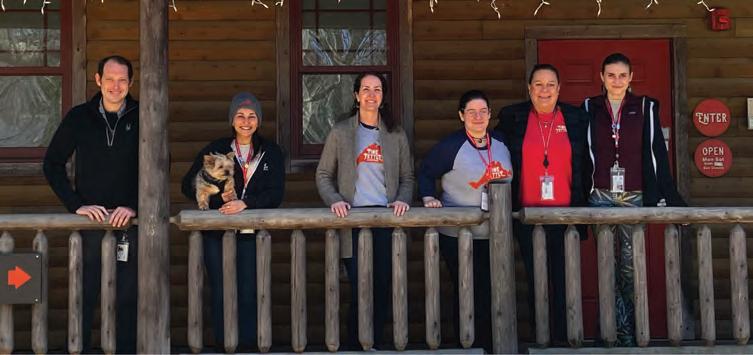
Rewilding typically refers to largescale projects — restoring the natural course of rivers and reconnecting them with floodplains, creating wildlife corridors or moving wildlife to decimated areas to restore biodiversity, cultivating kelp forests and marine ecosystems. But micro rewilding, as it’s called, plays a key role too. Siân Moxon, the founder of Britain’s Rewild My Street, told a reporter that micro rewilding can be as simple as planting a tree, adding a bee bowl or bird bath to your garden, or encouraging vines to climb the side of your home. The good news about micro rewilding is that neatness is out. Nature, says Moxon, is messy. And wild.
–Leslie Garrett
“ IN A WORD 11
.com
marthasvineyard.
Rewild /rē ' wīld/ in a word
C R A F T CA N N A B I S doog h e a l th good co n d ition . LOCALLY GROWN. LOCALLY ENJOYED. 510 State Rd, West Tisbury, MA 02575 • 508.687.0131 • finefettle.com breast-feeding may pose potential harms. It is against the law to drive or operate machinery when under the influence of this product. KEEP THIS PRODUCT AWAY FROM CHILDREN. There may be health risks associated with consumption of this ed by two hours or more. In case of accidental ingestion, contact poison control hotline 1-800-222-1222 or 9-1-1. This product may be illegal outside of MA. WALK-INS WELCOME
PHOTO BY CAROL VEGA
"Talk of rewilding North America gives some people nightmares of wolves running through the streets of Chicago and of grizzlies in LA"
Dear Dot,
I thought the House Finches were wiped out a number of years ago by a disease that made them blind. Have they made a comeback?
Dear Marie,
–Marie, Brooklyn, NY
You write to me from Brooklyn, having seen, no doubt, Bluedot’s Brooklyn Bird Watch (bit.ly/Brooklyn-bird-watch) featuring those red-headed charmers, House Finches.
These perky peepers are indeed prone to Mycoplasmal conjunctivitis, or House Finch Eye Disease, confirms Pat Leonard, who works in media relations at the Cornell University Lab of Ornithology. Finches with the disease show red, swollen, runny, or crusty eyes. And, as you suspected, Marie, in extreme cases, the bird’s eyes swell shut and they become blind.
I will pause here for a moment while we all absorb the tragedy of these birds being unable to see and, therefore, perform any of the functions necessary for survival. I recall the words of poet Mary Oliver, appropriate to this particular anguish, who wrote: “... it is a serious thing/just to be alive/on this fresh morning/in the broken world.” Her subject matter was Goldfinches, who also suffer from this debilitating disease.
The bacterium Mycoplasma gallisepticum has long afflicted chickens and turkeys, though for those fowl, it manifests as a respiratory issue. But in 1994, Pat Leonard tells us, backyard bird watchers around Baltimore began sending the volunteers at Cornell’s Project Feederwatch handwritten reports of house finches with crusty, red eyes almost bulging from their heads.
All About Birds, Cornell’s online guide to birds, tells us that, at that point in the early 90s, house finches were an enormously successful species and a familiar site at backyard feeders. And then, this poultry pathogen leapt across species.

Scientists, acting like scientists and not eco-advice columnists, viewed this as something of an opportunity to watch a disease
dot DEAR
spread in real time and to gather data. (Though I like to think they shed a few tears before getting down to work.) They mailed paper forms to thousands of bird lovers across the country — this was largely pre-Internet, of course. And then they waited.
Finches are rather fascinating, Marie. Cornell University’s All About Birds site (bit.ly/House-Finch-disease) discloses that finches are desert and grassland birds but amazingly adaptive, clearly, to non-desert environs. Around 1940, some enterprising folks in California created an illicit trade in captive finches, branding them “Hollywood finches,” a moniker undoubtedly aimed at conjuring glamor and opulence. But the nascent jig was up when an eagleeyed birder spotted a caged house finch in a Brooklyn pet store and contacted the Audubon Society, who alerted wildlife officials to shut down the illegal trade. Many with caged finches in their possession, fearing prosecution, quickly ushered their avian abductees out the door and into the wilds of New York City, where the birds were delighted to take a bite out the Big Apple — until the wicked winter of 1947/48 left just about 50 finches still alive. But that few dozen offered enough of a foothold that an Eastern population of House Finches was flourishing by the ’60s and making its way west at the same time the Western population was heading east. By the ’90s, the two populations were conquering the continent. All hail the mighty House Finch!
And then [ominous music], enter the mysterious eye illness.
Meanwhile, at Cornell’s Lab of Ornithology, a Belgian guy named André Dhondt had relocated to lead its Bird Population Studies program. He and his researchers spent about a decade gathering several hundred thousand reports from about 10,000 dedicated citizen scientists monitoring their feeders and the finches for evidence of this novel disease. The disease itself was much more expedient, spreading from its first sightings in Maryland into Wisconsin, Minnesota, Iowa, and even Canada in just two and a half years. But finally the culprit had a barely pronounceable name: Mycoplasma gallisepticum.
12 MARTHA’S VINEYARD /SPRING 2023
Illustration Elissa Turnbull
Scientists learned that the birds that survived developed something of an immunity to the pathogen for roughly a year postinfection. But the pathogen would then grow more virulent, causing a greater immune response in the surviving birds, and so on. You ask, Marie, whether House Finches were wiped out. They remain unflinchingly, finchingly stalwart — indeed Pat Leonard assures me that Cornell lists them as “a species of Least Concern with an increasing population” — but that’s not for lack of trying on the part of Mycoplasma gallisepticum

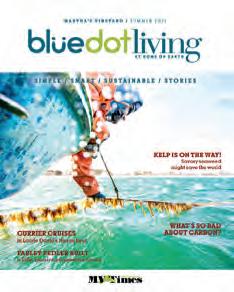
Here on the Vineyard, Matt Pelikan, bird lover and director of the MV Atlas of Life project, says that the disease had “put a crimp in the house finch population but certainly didn't wipe them out, either locally or more broadly in the region.” He’s seen House Finches on the Island that showed what appeared to be symptoms, but, he told me, like a lot of wildlife diseases, this one tends to be cyclical in occurrence, and he hasn’t seen signs of it lately.

But that does not mean we can rest in our battle against this foe, we soldiers of the House Finch army. If you and your friends have backyard feeders, Marie, keep them clean. This eye disease is strongly associated with feeding stations, which bring unnaturally large numbers of individual birds together in a place that basically has a communal dinner bowl, providing, Pelikan notes ominously, “prime conditions for a disease to spread.” Therefore, he adds, “bird lovers who want to reduce the impacts of the disease should practice rigorous feeder hygiene, washing feeders regularly with a disinfectant such as bleach.” (Nine parts water to one part bleach, the Cornell folks recommend.) Indeed, Pelikan says that, while
he’s not personally opposed to bird feeders, we might want to think twice about using them, because, in addition to helping spread disease, feeders, by concentrating birds, “turns them into a rich target for hawks and cats, put birds in proximity to windows, which they can smack into and injure or kill themselves, and alter the natural diet of birds and their pattern of distribution, with effects that are hard to predict but don't reflect what the birds evolved to do,” he says. “One should be aware of the risks as well as the benefits,” he sagely imparts.
If you think the balance leans toward bird feeder benefits, then, to further reduce the potential for disease, rake the area beneath the feeder to disperse any moldy seed. And space your feeders far enough apart that birds have room to spread their wings, metaphorically and literally. It turns out that social distancing helps prevent the spread of viruses in birds as well as people. If you notice sick birds (the eye disease isn’t the only illness, and House Finches aren’t the only birds afflicted), take down your feeders, clean them, and wait a few days for any sick birds to disperse before putting them up again. And calling all citizen scientists! Sign up for Project Feederwatch (bit.ly/ feeder-watch) and help provide valuable data to our bird-loving researchers. Warblingly, Dot
Please

DEAR DOT 13 marthasvineyard. .com
KEEP READING THIS MAGAZINE FROM WHEREVER YOU ARE Subscribe now, and we’ll mail Bluedot Living directly to you Four annual issues plus our Green Guide is $40 and we’ll send you a downloadable collection of Bluedot Kitchen Recipes. Email us at subscriptions@bluedotliving.com Reach 55,000 eco-conscious readers in our print magazine and email newsletters, for as little as $100 a week. Get in touch! adsales@bluedotliving.com Advertise with us! THE HUB / MARTHA’S VINEYARD SAN DIEGO / LOS ANGELES BUYBETTER MARTKETPLACE BROOKLYN / BLUEDOT KITCHEN
send your questions to deardot@bluedotliving.com
Salt Marshes
Learning to treasure
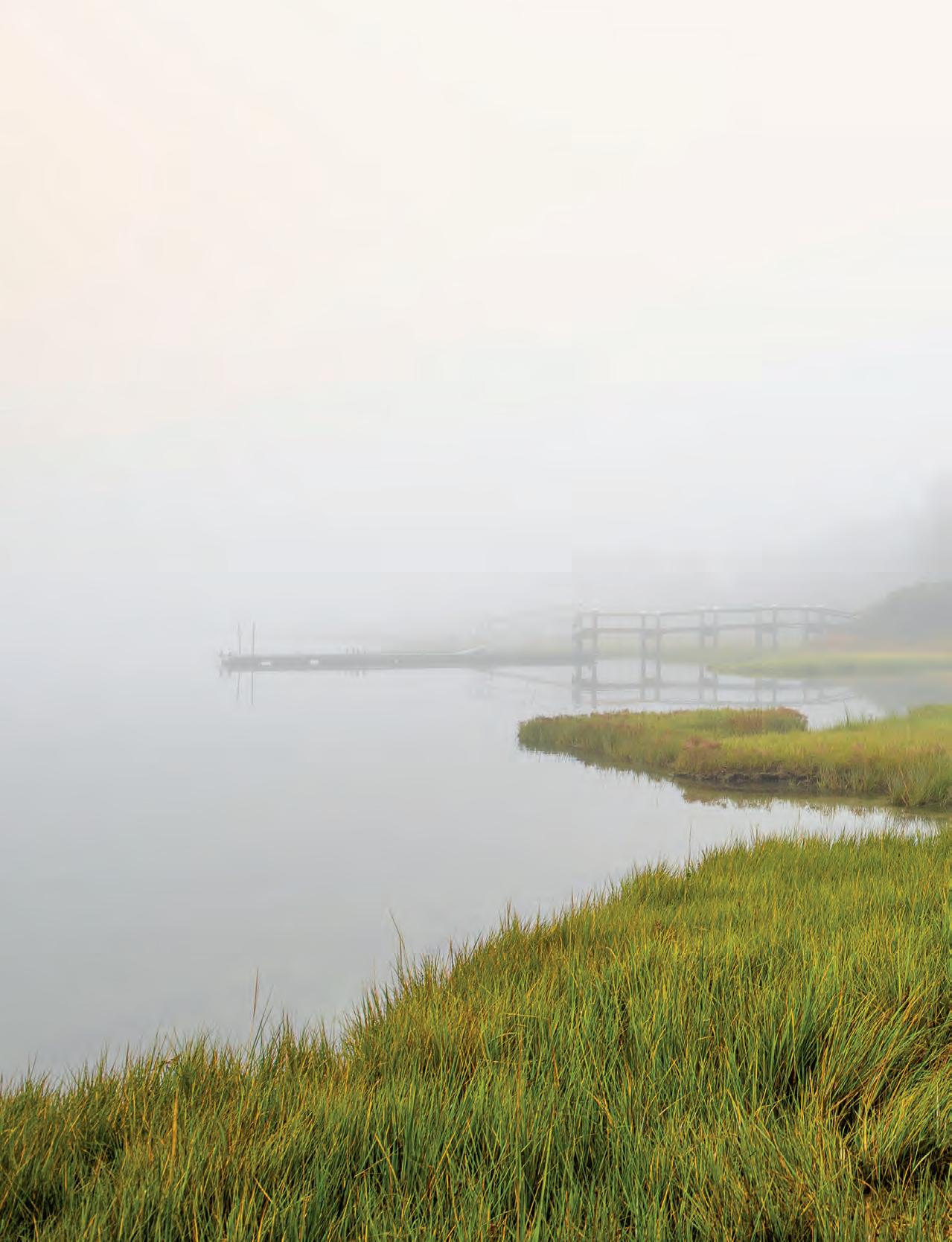
SALT MARSHES • FEATURE 14 MARTHA’S VINEYARD /SPRING 2023
Story by Sam Moore
“the low green prairies of the sea.”
“one of the most satisfying drinks of color my eyes ever tasted.”
– the Massachusetts naturalist Dallas Lore Sharp
SSalt marshes don’t always inspire affection, but when they do, it can be intense. In 1902, the Massachusetts naturalist Dallas Lore Sharp dedicated an essay to salt marshes in The Atlantic, calling them “one of the most satisfying drinks of color my eyes ever tasted.” There was, he continued, “no other reach of green so green.”
The marsh is both boundary and buffer — at the edge of the sea, it dampens wave action from storms, sequesters carbon, filters water, offers finfish and shellfish a protected nursery, and draws a sharp line at the end of many coastal walks.

“It's a stunningly beautiful and productive habitat, visually, ecologically,” said Suzan Bellincampi, Mass Audubon Islands Director and another disciple of the marsh. “And the fact of the matter is, the land is more useful than most people can even imagine, especially now.”
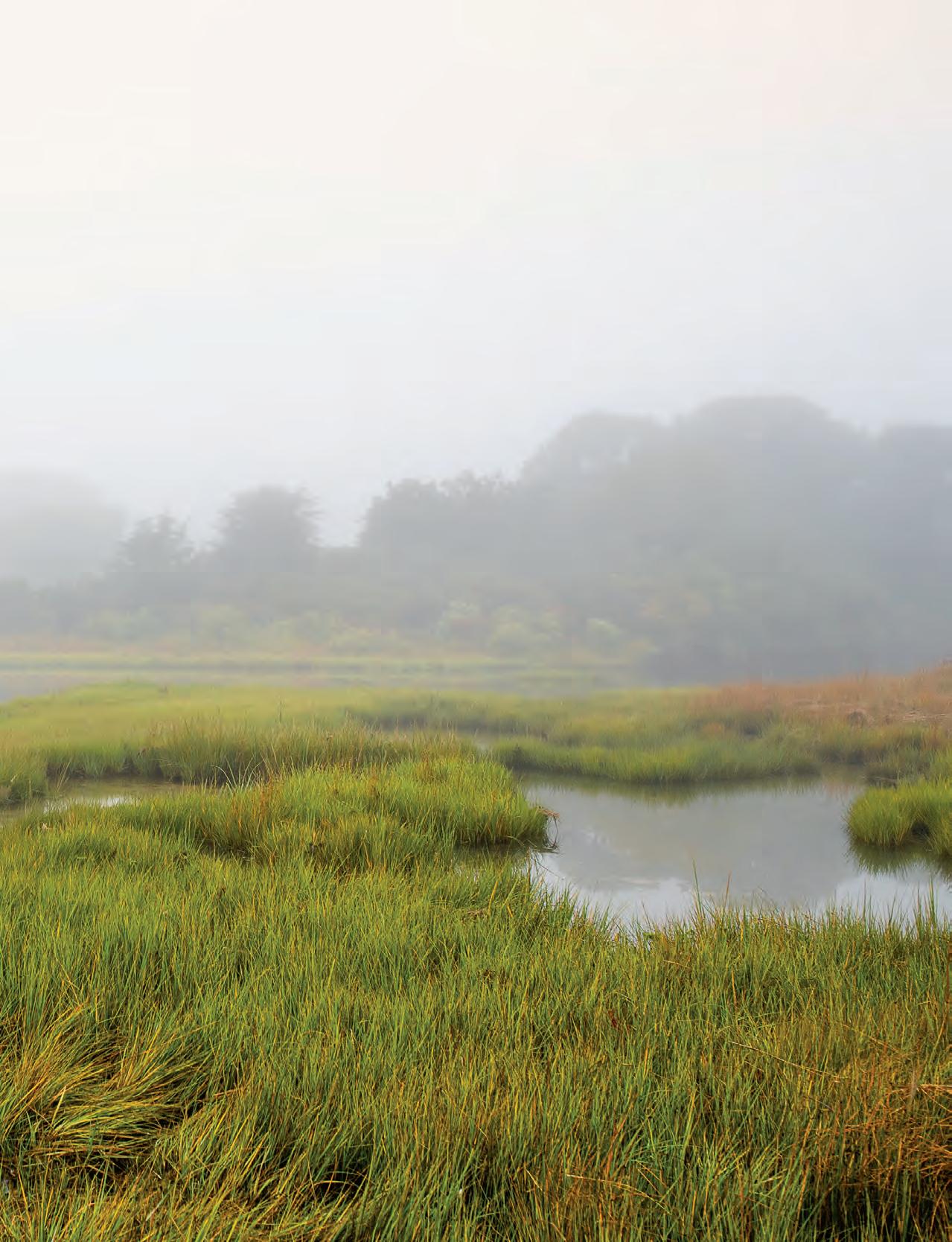
15
.com FEATURE • SALT MARSHES
marthasvineyard.
Suzan Bellincampi and a volunteer on the shores of Sengekontacket.
Marsh grasses at Sengekontacket.
PHOTO BY ALISON SHAW
COURTESY MASS AUDUBON
Useful is an adjective that has waxed and waned in this landscape. To the Indigenous peoples along the Atlantic and Gulf Coasts, marshes have been indispensable, with whole ways of living timed to this coastal abundance, fish and shellfish used for food, wildflowers used for dye. Tribes including the Wampanoag continue as stewards in these ecosystems today.
Settlers found use for marshes, too, particularly in fishing and farming. They set their hogs loose to snort around the mud flats for clams, and fished themselves for eels — buckets, baskets and bushels full. “Eels ran so thick that we first thought them sea grass,” wrote a colonist in 1634. “Not of so luscious a taste as they be in England,” he sniped, but “wholesome for the body.”
Europeans harvested salt hay for their livestock and thatched houses with it. The hay harvest was set to the tides, first according to a trusted few with knowledge of the moon, later according to a farmer’s almanac. When the tides ran low, the cut grass would stay dry, and during these times, men with scythes would make hay, as they say, while the sun shone.
The cattle and horses already had a taste for marsh grass, and the colonists figured that “the air of the sea whets
their appetites.” Horses wore special shoes for walking in the marsh muck, wide wooden ones that spread their weight out as they trudged across the spongy peat.
One motivation for opening the great ponds on the South Shore of Martha’s Vineyard was to lower the water enough to harvest the salt hay — which included the soft “black grass,” Juncus gerardii, more accurately called the saltmarsh rush, as well as the plentiful saltmeadow cordgrass, Spartina patens.

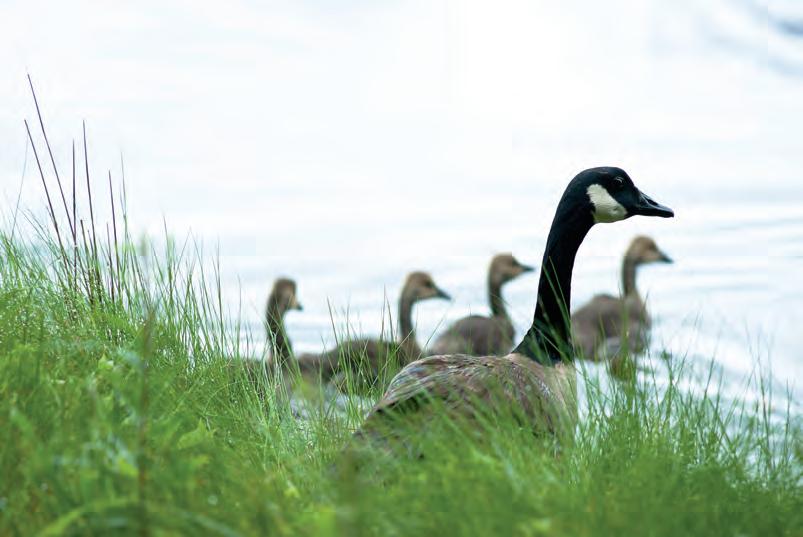
Sharp, the naturalist, loved these grasses, which “covered the marsh like a deep, thick fur, like a wonderland carpet into whose elastic, velvety pile my feet sank and sank, never quite feeling the floor. The tints, shading from the lightest pea green of the thinner sedges to the blue green of the rushes, to the deep emerald green of the hay-grass, merged across their broad bands into perfect harmony.” John Greenleaf Whittier called the vast marshes on the mainland “low green prairies of the sea.”
Salt hay was part of a resource-intensive colonial food pyramid, an insatiable need for one commodity, hay, to feed another, cattle, as cheaply as possible. As settlement pressed from the margins of the continent inward, chasing new business models, people in power began to think of salt marshes as a problem that needed solving. One rationale followed another for ditching, draining, and filling them.
In the 19th century, Federal Swampland Acts encouraged the “reclamation” of wetlands for farmland, and developers in booming cities used garbage and gravel to make marshes into new neighborhoods like Boston’s Back Bay. In the 20th century, after mosquitos were identified as a vector for disease, the Works Progress Administration and the Civilian Conservation Corps went
16 MARTHA’S VINEYARD /SPRING 2023
Geese at Farm Pond, Oak Bluffs.
SALT MARSHES • FEATURE
Grasses at Lagoon Pond.
into almost every marsh in the Northeast and dug ditches for standing water drainage — the ruler-straight channels we see today.
In total, Massachusetts has lost 40% of its salt marsh in the last 200 years, according to a study of historical maps. Another estimate, by the Massachusetts Office of Coastal Zone Management, put the net loss of marsh on Nantucket, Martha’s Vineyard, and the Elizabeth Islands over just the last century or so at about 375 acres, an area about the size of Squibnocket pond.
“Before people really understood the value of salt marshes, we kind of destroyed them,” Bellincampi said. “And now it's a coastal resilience imperative.”
Extensive marshes remain on Martha’s Vineyard on Chappaquiddick, in Pocha Pond and Cape Pogue bay, and between Oak Bluffs and Edgartown, in Senge-
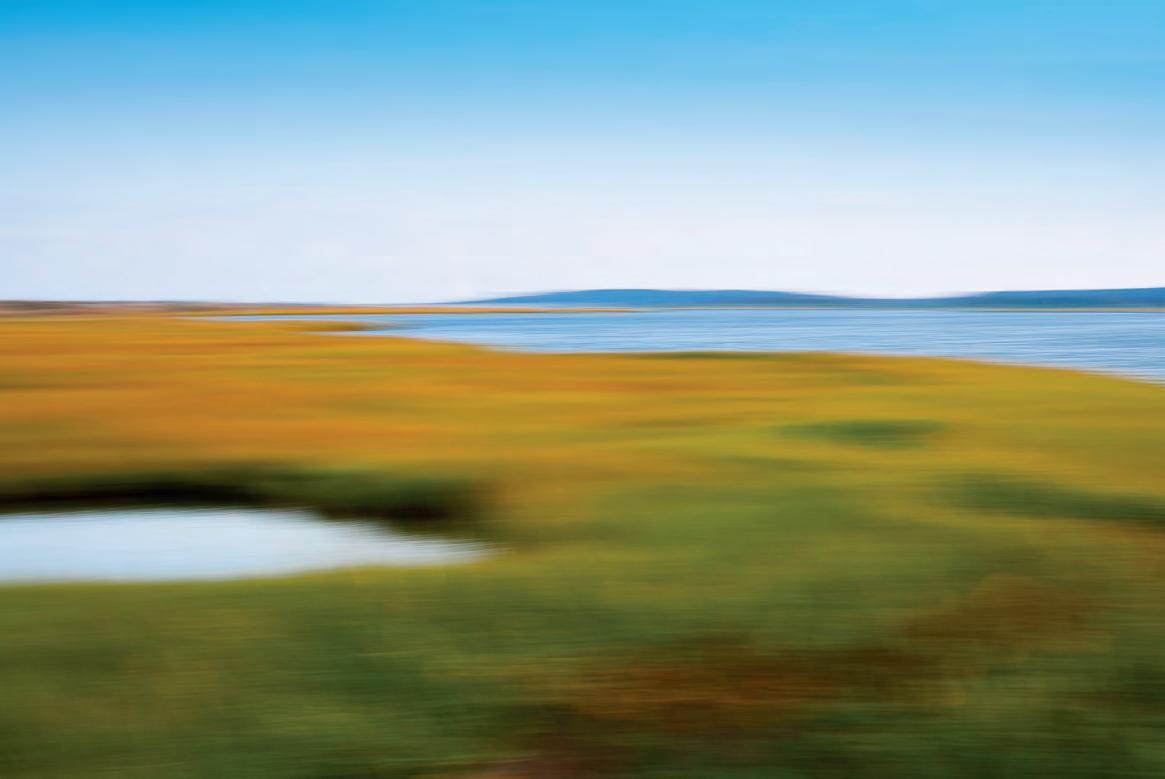
FEATURE • SALT MARSHES 17 marthasvineyard. .com
Sharp, the naturalist, loved these grasses, which “covered the marsh like a deep, thick fur, like a wonderland carpet into whose elastic, velvety pile my feet sank and sank, never quite feeling the floor. The tints, shading from the lightest pea green of the thinner sedges to the blue green of the rushes, to the deep emerald green of the hay-grass, merged across their broad bands into perfect harmony.”
Poucha Pond.
PHOTOS ALISON SHAW
kontacket, where they are protected by a long barrier beach. Other patches can be found all over the island — hugging inlets and shorelines of Menemsha, Katama Bay and Tashmoo, and scattered in
nooks across the Island’s great ponds. These landscapes are more protected now, and their losses have slowed thanks to federal and state legislation. But drawing lines around the marsh doesn’t
prevent it from changing in dramatic and sometimes alarming ways. Marshes are highly adaptable, but one thing they have not evolved to do is stay still.
Sergio Fagherazzi, a coastal geomorphologist at Boston University who studies salt marsh deposition, has written that salt marshes are “ephemeral landforms at the geological time scale,” that are “constantly reworked by coastal processes within a few thousand years, in a rejuvenation process.”
Marshes build up vertically, as vegetation traps sediment and generations of plants die and become peat. They also travel horizontally, as marsh grasses spread their rhizomes underground, send their seeds by wind and tide, or break off pieces of themselves that become new plants. They are eroded by coastal

SALT MARSHES • FEATURE 18 MARTHA’S VINEYARD /SPRING 2023
Protecting this ecosystem can mean restoring tidal flow and remediating ditches, but it also means making room for the marsh to move — maintaining undeveloped land where new marsh can form as old marsh is lost, rising inland and upland with the level of the sea.
Sengekontacket shoreline.
PHOTO ALISON SHAW
storms, and sometimes even calve like glaciers, splitting off “marsh bergs” that float away to wind up somewhere else.
They expand quickly seaward or landward as conditions allow, and contract even more quickly when conditions require. They can fill in behind a newly formed barrier beach, or inch up a tidal creek as freshwater retreats. They are ecosystems fine-tuned to a changing coastline, to the flux of sediment generated by elemental forces. “Compared to the history of Earth, a salt marsh
resembles a gorgeous butterfly,” Fagherazzi writes. “After emerging from the cocoon, it extends its wings under the morning sun, rises in the sky during the day, and when the night falls, it folds its wings and dies.”
Protecting this ecosystem can mean restoring tidal flow and remediating ditches, but it also means making room for the marsh to move — maintaining undeveloped land where new marsh can form as old marsh is lost, rising inland and upland with the level
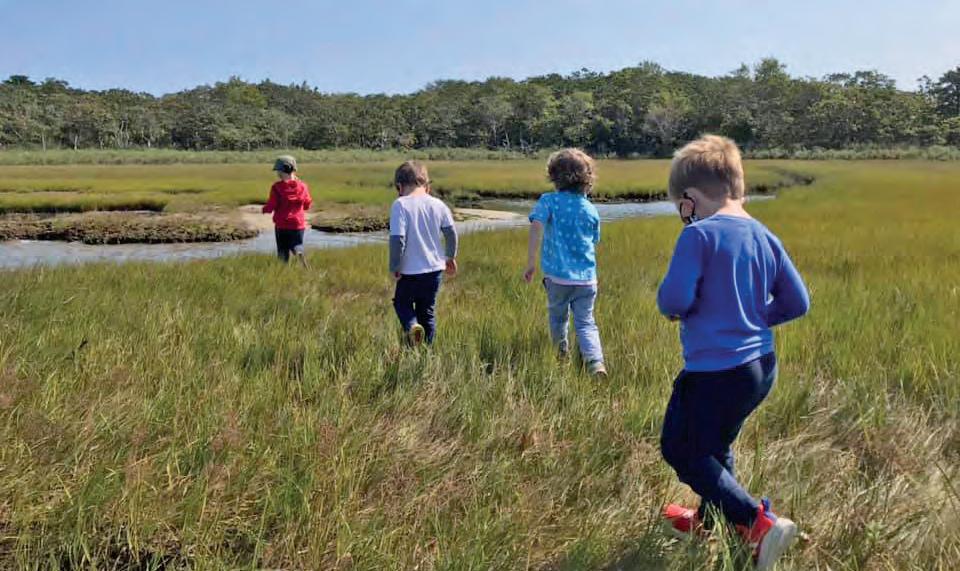

of the sea. I read that shoreline change arrives as a “pulse” of big, sudden storms over the “press” of the steadily higher ocean. Together these forces are an “ecological ratchet,” pushing freshwater trees and plants out and up, pulling salt grasses in.
The state has identified upland areas on Martha’s Vineyard that are crucial to protect as marshes rise, and the Martha’s Vineyard Commission is planning and mapping for the future to come. A recent study of Sengekontacket, funded by the Village and Wilderness Project, identified around 170 acres of land fringing the pond that could become marsh in the next 30 years, if preparations are made — enough to offset even a total loss of what’s there now.
Bellincampi often takes preschoolers into the Sengekontacket wetlands around Felix Neck. “They actually love to get their rubber boots on,” she told me. “It’s just amazing watching them stomp through the marsh. You never know what you're going to find out there — all the life, the little fish darting around, the holes for the crabs, the Spartina patens and alterniflora, depending on where you are in the marsh, the salt marsh asters and
FEATURE • SALT MARSHES 19 marthasvineyard. .com
Bellincampi often takes preschoolers into the Sengey wetlands.
Bellincampi and volunteers at Felix Neck, on Sengekontacket.
COURTESY MASS AUDUBON
all the flowers. Damselflies, dragonflies.” I, myself, am partial to seaside goldenrod, Solidago sempervirens, a perennial which grows at the edge of the marsh, blooming in dense bursts of yellow.
“Osprey like to hang out on the edge,” Bellincampi added, “on the beetlebung at Felix Neck. And then they'll just go down and get fish.” There are owls there, too. Sharp, the naturalist, encountered one at dusk and wrote: “What was I that dared remain abroad in the marsh after the rising of the moon? That dared invade this eerie realm, this night-spread, tide-crept, half-sealand where he was king?”
The saltmarsh sparrow is another
bird whose way of life is carefully tuned to the insects, grasses, and tides of this landscape. This bird nests in the high marsh, and races against the moon to lay eggs, hatch chicks, and raise them to fledglings in the few weeks before a big tide returns to drown the whole operation. Four out of every five saltmarsh sparrows have disappeared since 1998.
The sparrow, like the coal mine canary, indicates bigger problems on the horizon, as climate change causes continuing sea level rise and an increase in major storms. If the marsh disappears, a lot more will be lost. “It’s the buffer, it’s the protection zone,” Bellincampi said. “You
think of big strong trees, but the strength of the marsh is these little grasses and mud and detritus.”
“We have to protect and do our best to preserve what we have,” Bellincampi said, “because we've lost so much of it.”
The salt marsh, insect-laden, squelching with mud, has managed to gather a lot of admirers — myself among them. But I can’t do it justice in words like a gilded-age naturalist. “When I catch that first whiff of the marshes after a winter,” Sharp wrote, “the smell of it stampedes me. I gallop to meet it, and drink, drink, drink deep of it, my blood running redder with every draught.”
What you can do
• Check out this StoryMap on Vineyard marshes by Chris Seidel and Dan Doyle at the MVC: bit.ly/story-mapmv
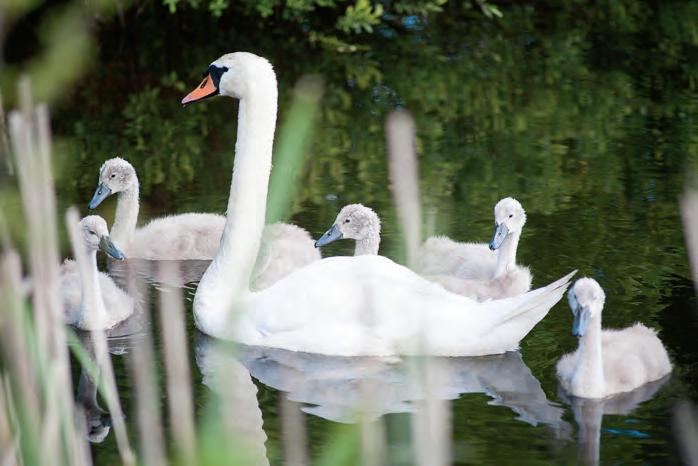
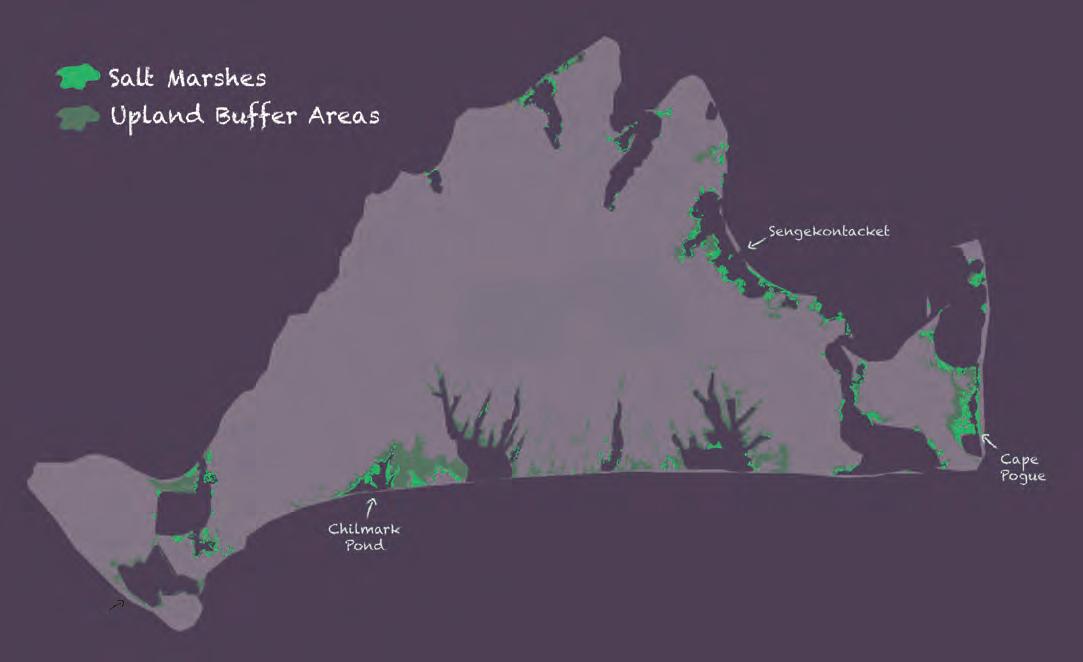
• Take a walk in the marsh
• Read the Sengekontacket case study (great maps): bit.ly/sengey
A SHARING OF MEANS • FEATURE 20 MARTHA’S VINEYARD /SPRING 2023
Salt marshes on Martha's Vineyard.
Swans at Mill Pond.
PHOTO ALISON SHAW
MAP BY SAM MOORE
EDIBLE BACKYARDS
How to Plant a Fruit Tree Guild And enjoy the fruits of your labor
Spring signals a return to gardening — and also to the time for planting fruit trees.
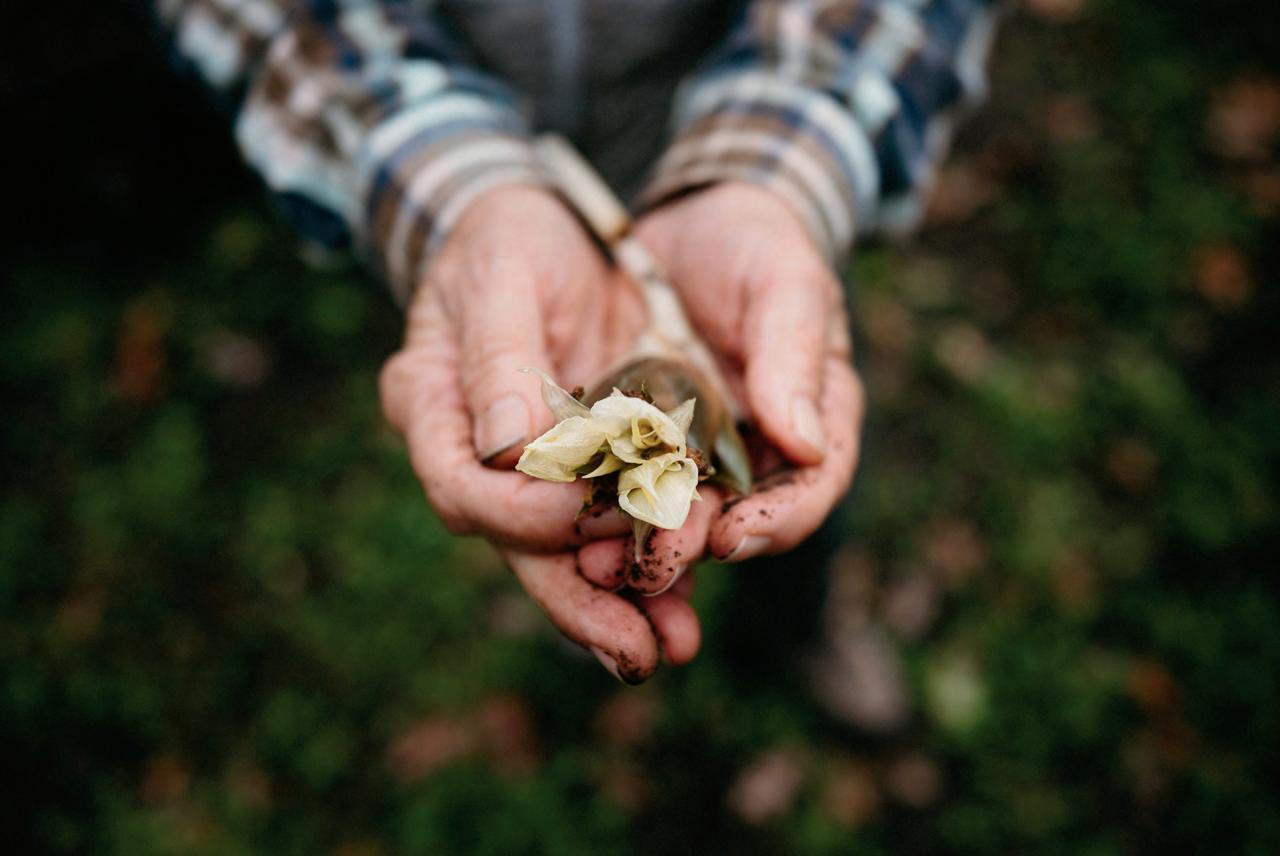
Garden educator Roxanne Kapitan outlines a better way to grow fruit trees, one that ditches traditional fruit tree inputs like fertilizers, fungicides, and chemical sprays, and relies instead on plants. It’s called a fruit tree guild, or companion planting, and it’s a more sustainable approach to planting with a lower carbon footprint.
Each guild involves one fruit tree and includes 6 or 7 species planted around it. Those companions — often edible themselves — each fulfill a particular job such as mulching the wide circle around the tree, adding nutrients to the soil, repelling unwanted insects, and attracting beneficial insects.
"Instead of having one type of plant, such as an apple tree, each tree has a community of plants around it that support the tree in a variety of ways,”
says Kapitan, who explains that this type of planting in permaculture gardening mimics nature. “You rarely see monoculture in nature; you see a community of plants. Most of the fruit trees in guilds do remarkably well.”
Kapitan, a former science educator turned gardener and landscaper, is turning back to educating again, and using her own Oak Bluffs property as a teaching
model. Over the past three years, she’s transformed her moderately sized backyard (125x70 feet, formerly filled with a mix of grass, weeds, poison ivy, and tangles of vines) into an educational and edible landscape or food forest where she holds some of her classes, many sponsored by Island Grown Initiative. The size of her yard shows homeowners that they don’t need acres of land or a traditional orchard, but can enjoy the
21 marthasvineyard. .com
Story by Catherine Walthers Photos by Sheny Leon
“Instead of having one type of plant, such as an apple tree, each tree has a community of plants around it that support the tree in a variety of ways.”
– Roxanne Kapitan, Garden Wisdom
fruits of their labor, so to speak, with just two or three or five fruit trees. Kapitan also has another educational garden on a private property in West Tisbury which she calls a “Garden of the Future.'' There, she is experimenting with growing only edible perennials in an eight-sided plot.
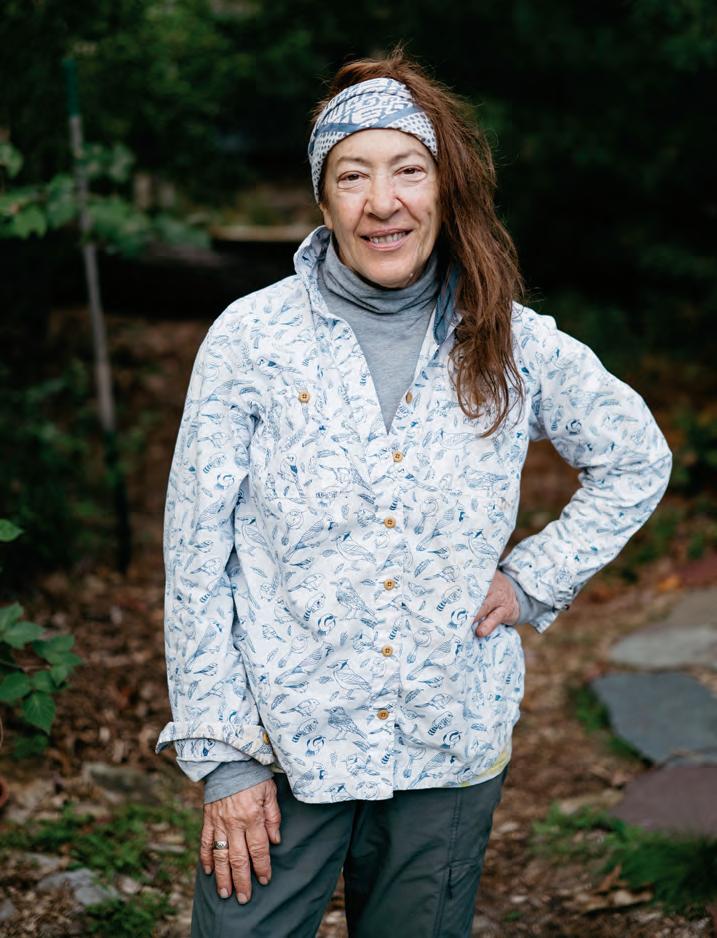
“People are looking at the idea of edible landscapes much more seriously than they ever have,” she explains. "It’s the fastest growing gardening trend there is.”
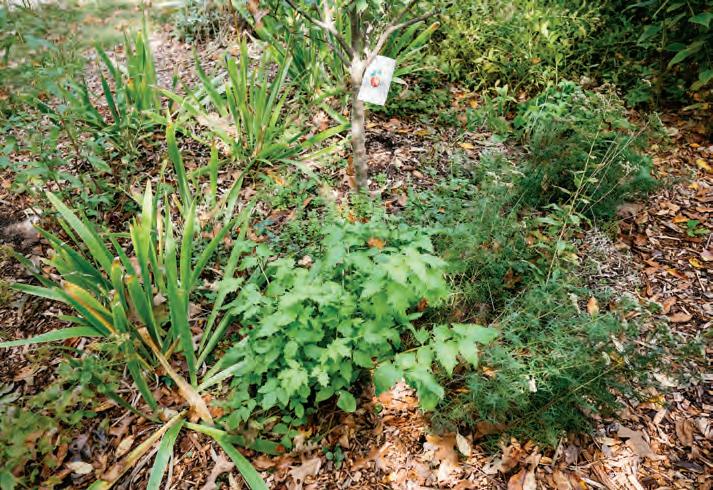
Six fruit guilds form the backbone of Kapitan’s new backyard landscape, slightly overlapping circles or guilds lining a short curvy path that ends at her newest addition, a pond with a waterfall. There are three apple guilds with Macoun, Empire, and Liberty apples, each supported by the chosen helpers. “Those are the three apples I love to eat,” she says. She first learned about Liberty apples, a wonderfully crisp, sweet-tart apple that grows well in New England, when she owned her first plant nursery on Summer Street in Tisbury. She also planted two pear guilds, one with Bartlett pears and the other with Anjou.
The sixth guild features a self-pollinating mulberry bush producing black berries from late June into summer, which are “delicious,” according to Kapitan. Mulberries taste and look a bit like blackberries, and are a good source of iron, Vitamin C, and several plant compounds linked to lower cholesterol, blood sugar and cancer risk. “I just eat them,” she says. "I go out there and graze."
Kapitan hasn’t bought a single bag of fertilizer or mulch, nor sprayed anything
EDIBLE BACKYARDS • FEATURE 22 MARTHA’S VINEYARD /SPRING 2023
Kapitan hasn’t bought one bag of fertilizer or mulch, nor sprayed anything on her trees. And that’s the point.
Roxanne Kapitan in her backyard, where she is planting species to create a fruit tree guild.
Fruit Tree Guild Companion Planting
Suppressors
Plants that help suppress grass
Daffodils, Iris, Chives, Leeks, Garlic
Attractors
Plants that attract a variety of beneficial insects, and that help pollinate Dill, Fennell, Coriander
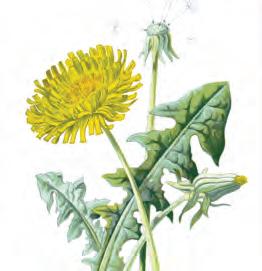
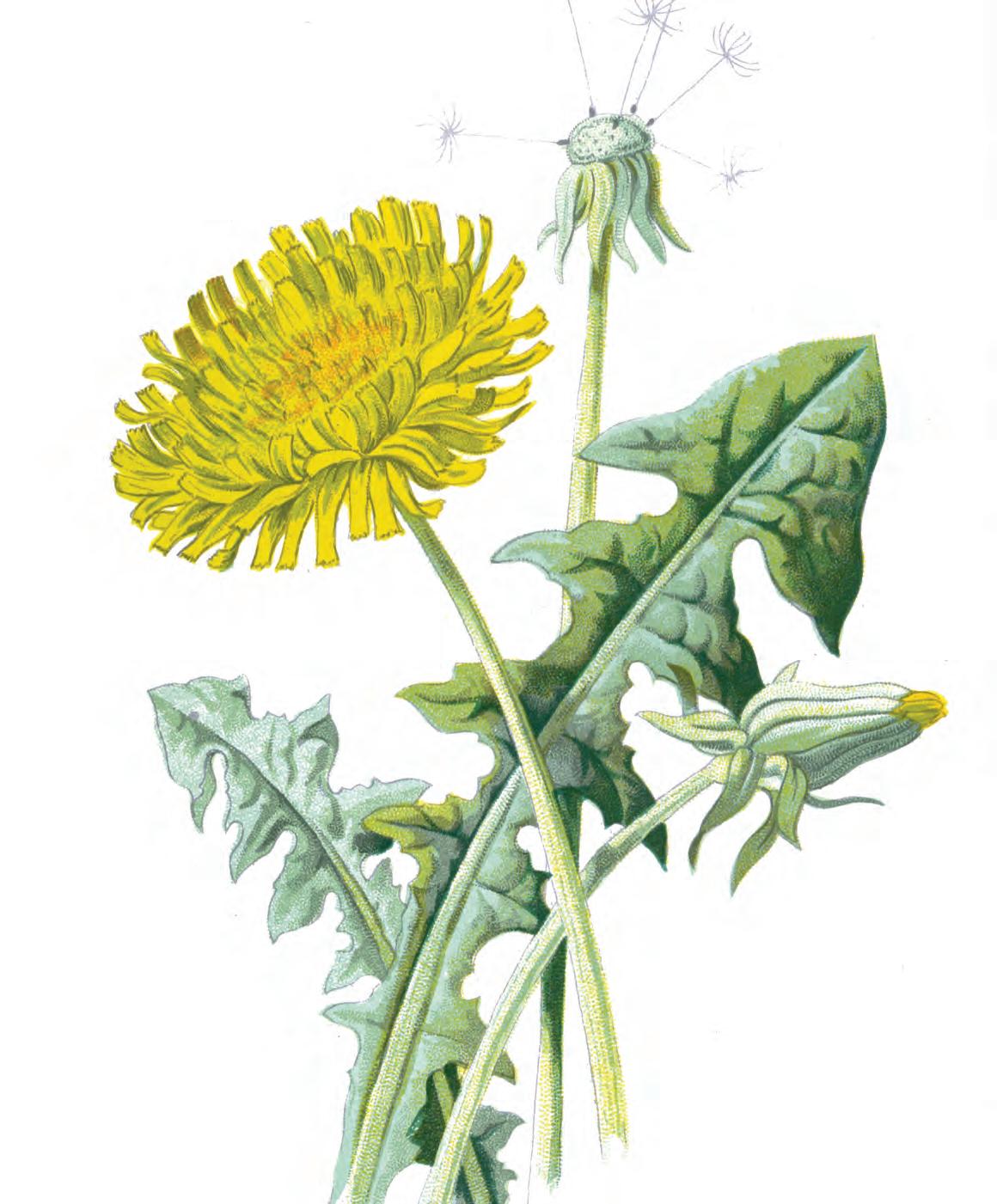
Repellers
Plants that repel potentially damaging insects

Nasturtium, Marigold, Rue
Mulchers
Plants that naturally provide mulch Rhubarb, Comfrey, Borage
Accumulators
Plants that increase nutrient content of the soil
Yarrow, Chicory, Dandelion
Fixers
Plants that increase the amount of nitrogen in the soil
Clover, Beans, Alfalfa, Peas
Classes can help you learn all about edible back yards. Read about them here: bit.ly/41ajEMK
FEATURE • EDIBLE BACKYARDS 23 marthasvineyard. .com
IRIS
FENNEL
BORAGE
ALFALFA
NASTURTIUM
DANDELION
on her trees. And that’s the point. She planted young fruit trees from a nursery (rather than bare rootstock, which can take three to five years to produce fruit), and as a result, she picked apples the first year and has since enjoyed a modest harvest each fall as the trees grow and thrive.
The first thing to understand about fruit trees, Kapitan explains, is that they don’t fare as well with grass growing beneath them, despite all the bucolic images of apple orchards amidst grass. Grass competes with fruit trees for nutrients, especially nitrogen, which is the second most important element for an apple or fruit tree after water. "Grass needs lots of nitrogen, so do fruit trees," says Kapitan. Perennial plants such as irises or daffodils, called suppressors in this type of planting, keep grass and weeds from encroaching near the tree base, as their shallow root rhizomes spread and help suppress grass growth. As an added bonus, these bulbed plants go dormant in the summer and so do not take valuable water and nitrogen away from the thirsty apple tree when rainfall is likely to be scarcer.
don’t need to irrigate, because you have all this mulch on top of the base of the fruit trees.” Natural mulch also decomposes, adding additional nitrogen back into the soil, helping to negate the need
Kapitan planted young trees, rather than rootstock, and has enjoyed a modest harvest each year since.
turn feed on the codling moth, a medium-sized light brown pest which attacks both pear and apple trees by laying eggs on the fruit as well as tunneling inside the fruit to feed on the seeds.
Traditional orchards use a variety of sprays with chemicals like malathion or carbaryl to prevent insect damage such as this, as well as fungus and other infections that can wreak havoc in an orchard. “Spraying, right away, has a large carbon footprint. This is not sustainable.”
Finally, you also need plants known for drawing nutrients from deep in the soil. “Those are dynamic accumulators,” Kapitan explains. "It's a big word, but their long taproots simply go down and bring up minerals deep within the soil and make them accessible to the fruit tree. All of this is so you don’t have to go out and buy granulated fertilizer.”
Kapitan appreciates that her fruit trees and the accompanying guilds provide her with both fresh food right from her backyard and a lovely, serene landscape. “Starting with iris, then comfrey, then marigolds, there’s a constant flowering,” she says. The gurgling waterfall in her pond not only blocks out traffic noise but also makes it “Zen and very peaceful.” The pond performs an additional function of attracting different bird species and frogs that help keep insect populations balanced, further protecting her fruit trees.
The mulchers around the tree, including plants like rhubarb with large leaves that drop after a spring harvest, or borage with good-sized leaves and edible blue or white flowers, act as other mulches do, holding in moisture and keeping out weeds.
“This chop-and-drop plant mulch is very important,” she notes. “Now you don’t have to buy mulch, and maybe you
for purchased fertilizer. “All that stuff from outside your yard is another huge carbon footprint,” she emphasizes.
In this permaculture guild system, some plants, such as edible nasturtiums or lemongrass, repel potentially damaging insects, while others attract beneficial ones, including those that pollinate the trees. Plants like dill, fennel, and cilantro attract beneficial wasps which in
Fruit trees take some dedication and work, she says, and that includes learning to prune branches sometime between November and early March when the tree is dormant to keep the trees healthy and productive. “It’s much easier to grow raspberries,” she says, half jokingly.
Thanks to her role as the landscape manager at Oak Leaf landscaping for the past 12 years, Kapitan’s handiwork
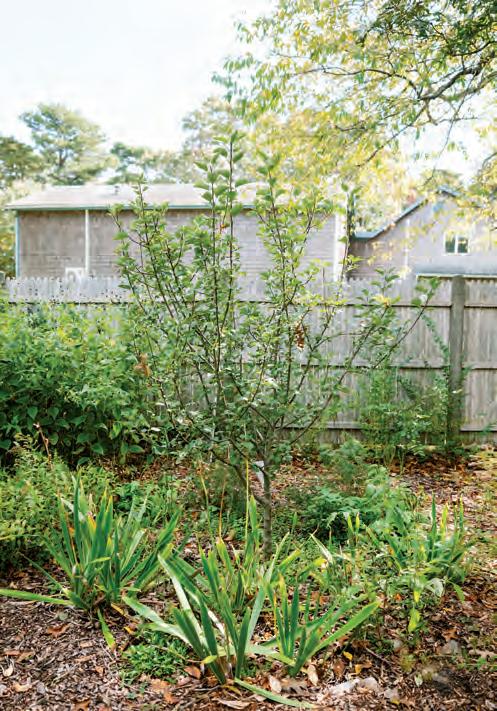
EDIBLE BACKYARDS • FEATURE 24 MARTHA’S VINEYARD /SPRING 2023
“Permaculture is the harmonious integration of plants, animals, and human systems that create a closedloop system.”
–Kaila Binney, permaculture instructor
can be seen around the Island, including some beautiful high-end herb gardens, enclosed blueberry and raspberry patches, and managed vegetable gardens. She has always been a proponent of organic growing and of making and using compost from discarded food and yard materials, but in recent years, she also began studying permaculture, food forests, and her newest experiment, a fully perennial edible garden. It inspired her to start her own business, Garden Wisdom, through which she hopes to install more edible landscapes Islandwide and to continue teaching better, more sustainable growing methods.
She studied permaculture here on the Island with teacher and Chilmark resident Kaila Binney, who first studied it in Malaysia and elsewhere, and lived in an eco-village that practiced its methods. Binney describes permaculture as the harmonious integration of plants, animals, and human systems that create
a closed-loop system. Binney eventually moved to Martha’s Vineyard to share her knowledge, and she now runs the Woods School, a cooperative, nature-based homeschool on the Island.
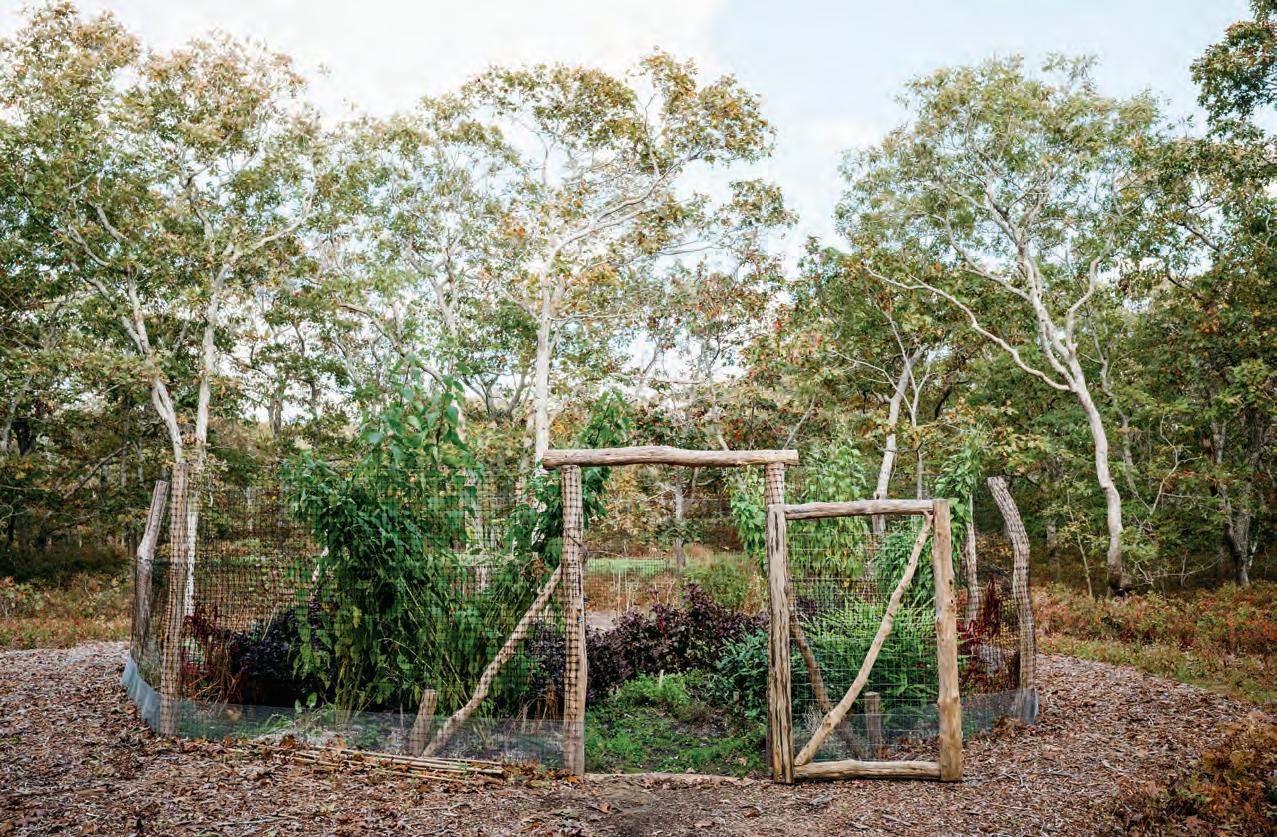
Homeowners can start small and still make a big difference — that’s the good news, Binney says. By simply drawing a circle and plugging in a couple things like clover instead of grass, you can begin to create the microclimate fruit trees need to survive. And, she adds, you don’t need to start from scratch with new fruit trees. In her own

yard at Allen Farm, she did an experiment with two established peach trees, two inside the garden and two others elsewhere on the property. She planted two comfrey plants around the trees in the garden.
“The ones in the garden are exponentially more productive, and it’s really so simple,” she said.
Kapitan expands on this: “When I first started gardening, I used to think I was growing the plants,” she says. “Now, after 30 plus years, I realize that the plants are growing me."
25
.com
marthasvineyard.
“People are looking at the idea of edible landscapes much more seriously than they ever have. It’s the fastest growing gardening trend there is.”
– Roxanne Kapitan, Garden Wisdom
Kapitan appreciates that her fruit trees and the accompanying guilds provide her with both fresh food and a lovely, serene landscape.
Garden to Table,
All Year
Long
Spring’s the time to start planning. And planting!
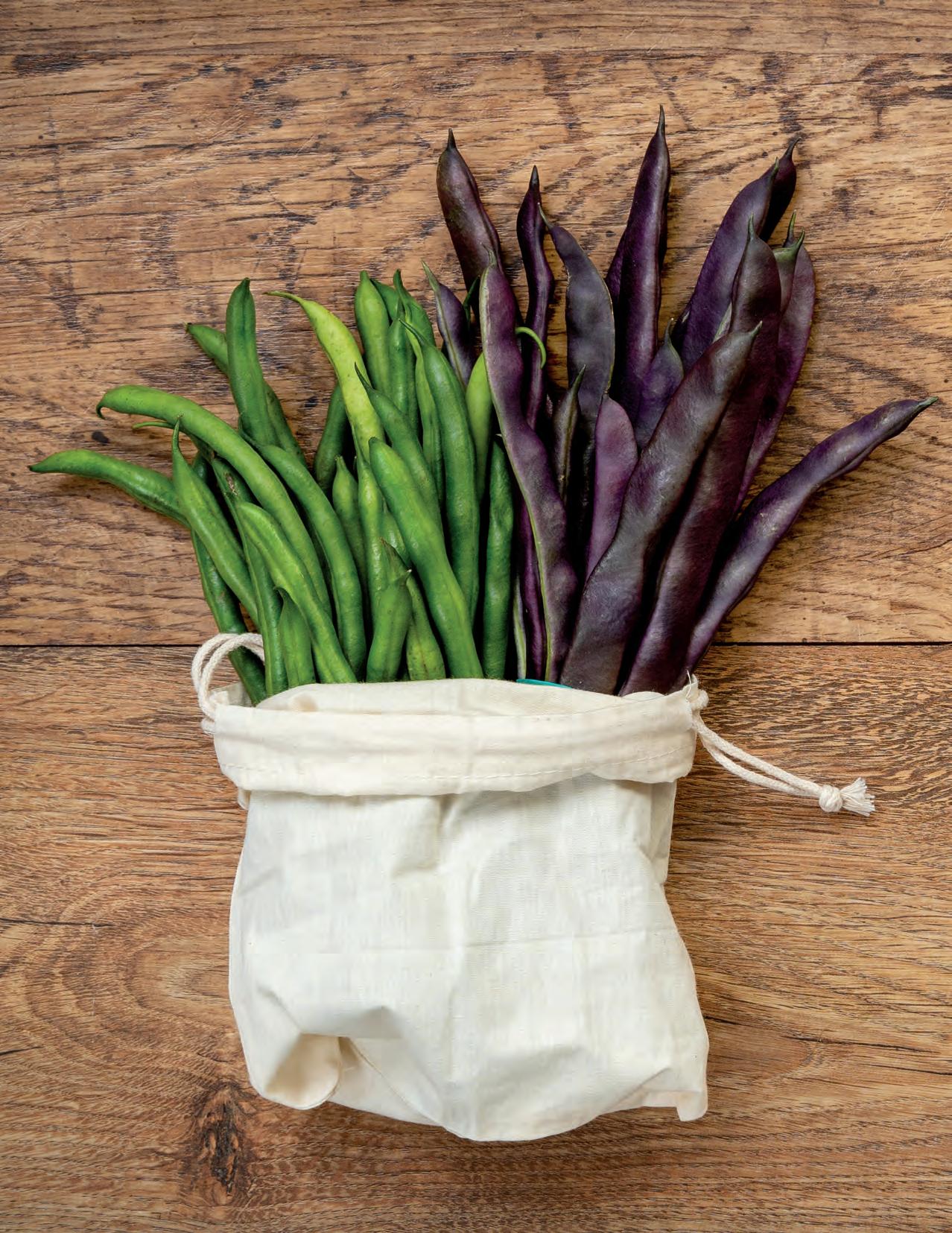 Story by Laura D. Roosevelt
Story by Laura D. Roosevelt
GARDEN TO TABLE • ALL YEAR LONG 26 MARTHA’S VINEYARD /SPRING 2023
““My goodness!” a guest remarked at dinner, looking out through the windows of my screen porch toward my vegetable garden. “It’s so lush! What are you growing?”
I didn’t hesitate. “Weeds,” I replied. That was twenty years ago, when I had young children, a job freelancing for one of the local newspapers, and nowhere near enough time to keep up with my garden, which is the size of a tennis court.
Happily, now that my kids are grown, my garden gets neater and more productive with each new summer. For the past several years, I’ve been proud to tell anyone who’ll listen that from July to the end of October, I pretty much don’t set foot in the supermarket’s produce section, instead planning meals around what’s ripe and ready just outside my back door.
Inspired by Barbara Kingsolver’s Animal, Vegetable, Miracle, a memoir of a full year she and her family spent eating locally (the output from their own farm and garden, supplemented by goods from other producers within a 100-mile radius), last summer I took things to the next level: I decided to plan my garden with a view to eating its bounty all through the winter and following spring. Like Kingsolver, I was troubled to learn that the average item of food on an American’s plate has traveled over 1,500 miles to get there, in vehicles that burn fossil fuels and emit carbon monoxide all along the way. And I dislike the idea of genetically modifying fruits and vegetables to make them less perishable — a measure that often results in less flavorful (and sometimes less nutritious) food. (Try comparing a supermarket strawberry to one from a local farm and you’ll see what I mean about the flavor.) Even worse is the common food industry practice of picking produce before it’s ready and then gassing it after transport to “ripen” it, and/or using preservatives and irradiation to keep it stable for travel. To lessen my incidental support for all these procedures, I made a goal of eating at least some produce from my own garden all year long.
I started small, selecting just over a half dozen items that I expected would last well, either in the relative cool of my
basement (the closest thing I have to a root cellar), in my freezer, or in mason jars. For basement storage, I planted garlic, red onions, and butternut and red kabocha squashes; for freezing, sugar snap peas and string beans; and for pickling, cucumbers and shishito peppers. I’d hoped also to can some tomatoes, but my crop was diminished by blight and a horde of hungry chipmunks, and I didn’t get enough fruit. Better luck next year.
My “root cellar” foods have held up wonderfully. I’m writing this in late February, and I still have about 50 heads of garlic that show no signs yet of sprouting or shriveling (though both will occur sooner or later). Ten braids of red onions (with a dozen or so onions per braid) remain hanging from nails I drove into the basement’s ceiling joists. Some individual onions have begun sprouting, which is the beginning of the end for them. Once the sprouts get long, the body of the onion itself is starting to rot and is not something you want to eat. (When this happens, I cut off the green sprouts and use them as scallion substitutes, so at least I get something out of it, and the rest of the now inedible onion goes into my compost.) The larger onions tend to sprout first, but I’ll probably be eating the smaller ones for at least another month. As for the squashes, I still have about 20 left, and they look as good as any you’d find in Stop & Shop.
I’ve used up almost all of the beans and sugar snaps I froze, whereas the pickles … well, it turns out I don’t eat pickles very
often, so these may still be languishing in my pantry when it’s time to start pickling next year's cukes and peppers.
Over the next year, I’ll be writing about what you should be doing at given points in the year in order to maximize off-season eating from your own gardens. Note that I am writing from Martha’s Vineyard, which is in hardiness zone 7. Planting schedules, soil temperatures, and even what you can successfully grow will vary according to your region’s hardiness zone, so be sure you know your zone and how it affects what you can do in the garden. See Planting zones to find your zone, and plants in your area for a good introduction to what you can plant in your area. In zone 7, it’s too late for you to enjoy homegrown garlic this year, since it’s planted in the late fall for harvesting the following summer, but everything else I
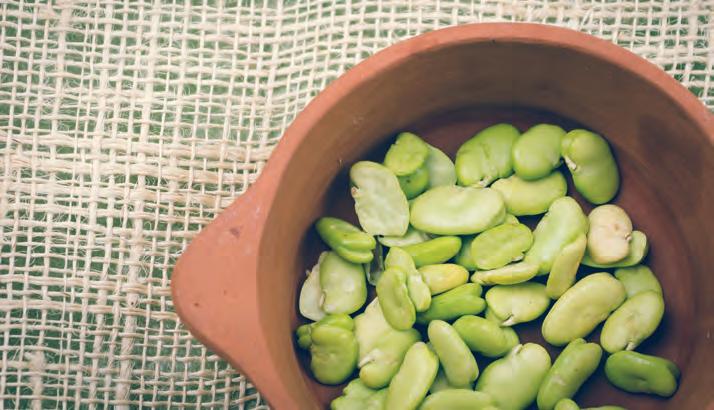
ALL YEAR LONG • GARDEN TO TABLE 27
.com
marthasvineyard.
Over the next year, I’ll be writing about what you should be doing at given points in the year in order to maximize off-season eating from your own gardens.
preserved for this winter (and much more) can be planted at various points from now to midsummer. A few tips:
SUGAR SNAP PEAS (and snow peas, if you prefer them or want both) should be in the ground by the end of April, as they don’t like hot weather. If you’re running late, there’s a trick that makes them emerge faster: Start by soaking the seeds overnight in a bowl of water. The next day, drain them, then fold them in dampened newsprint. Keep the newsprint moist for the next two days, then check the peas daily. When they’ve started to sprout, plant them, and they’ll be up before you know it. Peas need to grow on trellises, to which they fasten themselves with their own tendrils. (Sometimes a twist-tie or two is helpful to keep vines grown heavy with pods attached to the trellis.) My “trellis” is chicken wire stretched between tall stakes — at least six feet high, as peas are vigorous growers.
STRING BEANS come in many varieties. I’m partial to the purple ones (which turn green when cooked), because they’re easier to see amidst all the foliage. Pole beans need trellises or other supports, since they’re vines and
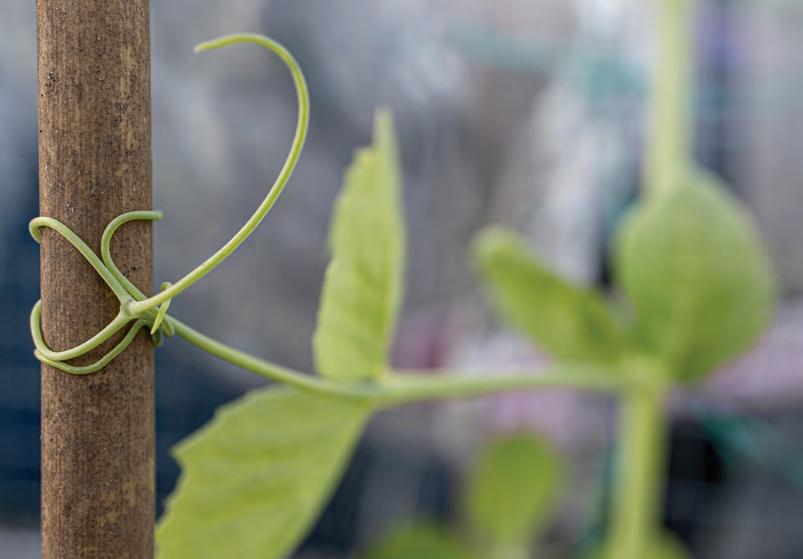
grow upward. Bush beans don’t, but they require a lot of bending or squatting when picking, which your knees and back may not enjoy.
Don’t plant beans until there’s no danger of frost and the weather is getting warm for good. The soil needs to be at least 48°. I usually estimate this, but this year, I’m going to buy a soil thermometer. (Shirley’s in Vineyard Haven carries them, or you can get one online for under $20.) Soil that’s too cold and moist delays germination and can cause the seeds to rot in the ground, which I’ve learned from painful experience. You can speed germination by sprouting beans in newsprint as described for sugar snaps above.
LIMA BEANS You might believe you hate lima beans, but that’s just because you’ve never had them fresh out of the garden. Homegrown lima beans are absolutely delicious; think succotash, think briefly boiled and slathered with butter, think sautéed with garlic. Trust me on this.
Like string beans, lima beans come in both climbing and bush varieties. They take sixty to ninety days to mature, with the bush beans coming in before those grown on a trellis. Do not try my damp newspaper method of germinating. I’ve

attempted it twice, and both times, when I checked on the seeds after two days, they were covered in white mold and rotting, without even a trace of germination. Plant your lima beans directly in the ground three weeks after the last frost, once daily temperature has been consistently 65° for a week or so, probably mid to late May.
ONIONS can be planted from seed, but you need to start seeds indoors six weeks before planting them outdoors, so we’re too late for that. A faster, surer method is planting from “starts,” which are essentially very small onions, about the size of your fingertip. My starts always grew a bit and gave me onions, but they were always on the small side, probably because I planted them too late; starts, I’ve learned only recently, like to be planted in cool soil, probably in late March or early April. Again, we’re a bit late; starts will still work, just not as well as they would have if planted earlier.
Two years ago, I ordered onion seedlings online (you receive a big clump of them held together with a rubber band), and now I’ll never grow onions any other way. Last summer, some of my onions grew to the size of softballs. Onion seedlings should be planted when the soil is about 50° — usually early May. There are a number of other preservable vegetables that you can plant from seed before the end of May, including beets, cabbage, carrots, cucumber, and peppers. Early crops of these can be pickled or canned (canning preserves vegetables in brine, without vinegar). In a couple of months, I’ll write about crops planted later in the season, as well as second plantings of some of those already mentioned. Here’s a useful planting calendar for Zone 7 .. Peruse this to get a sense of what you should be planting when, and don’t hesitate to use Google to find out the optimal soil temperature for planting anything specific.
I’ll leave you with a recipe I made in early February, using my own garlic, onions, and butternut squash, along with collard greens that were still growing in my garden right up to the weekend when we had those below 0° temperatures.
GARDEN TO TABLE • ALL YEAR LONG 28 MARTHA’S VINEYARD /SPRING 2023
GARBANZO STEW WITH COLLARDS AND WINTER SQUASH
Recipe and Photo by Laura D. Roosevelt
Serves: 3–4
This is a meal-in-one recipe I’ve been making — and modifying — for nearly 25 years. I first had it at a friend’s house on Halloween night, after we took our young children trick-or-treating. I was still new, back then, to cooking with Indian spices, and I thought this dish was the most delicious thing I’d ever eaten. All these years later, I continue to make it several times a year, but I particularly like making it in winter, when I can still use squash, onions, and garlic harvested the previous summer and stored in my cool basement, along with collard greens that remain growing in my garden throughout the winter unless there’s a severe freeze. It’s a meal that can be made in advance and quickly reheated, and the recipe can easily be doubled or tripled to feed a crowd.

INGREDIENTS
1 tbsp. olive oil
2 tbsp ghee or butter
1 tsp. turmeric
1 tbsp. garam masala
1 tsp. ground chili
1/3 cup plain yogurt
2 onions, chopped
2 cloves garlic, minced
2 cups peeled butternut or other winter squash, cut in ½" dice
½ cup chopped cilantro (leaves and stems), plus more cilantro leaves for garnish
1 (2") piece ginger root, peeled and finely chopped or grated
1 (15 oz.) can diced toma toes, or 2–3 medium fresh tomatoes, chopped, juices reserved
1 (15 oz.) can garbanzo beans, drained
1 medium bunch collard greens or kale, stems removed, leaves chopped into bite-sized pieces, or one
5 oz. bag baby spinach
Cooked rice or quinoa for serving
Pinch of salt
DIRECTIONS
1. Preheat oven to 375°. In a medium bowl, mix the diced squash with the olive oil and salt until evenly coated. Spread the squash in a single layer on a baking sheet, and roast in the oven for 15 minutes. Remove from the oven, stir and turn over the pieces, then return to the oven. Roast 15 to 20 minutes more, until the squash is easily pierced with a fork.
2. Meanwhile, in a Dutch oven or a frying pan with high sides and a lid, sauté the onions and garlic in the ghee on medium heat until translucent, about 5 minutes, stirring occasionally. Stir in the turmeric, garam masala, chili powder, and ginger, then add the tomatoes (and reserved juice, if using fresh).
3. Remove half the garbanzos and purée them with yogurt in a food processor or blender until smooth.
Stir them into the tomato-onion mixture, along with the whole beans. Bring the mixture to a boil, then reduce heat to low. If using chopped collard greens, place them on top, cover, and simmer for 5 minutes. Remove the lid, stir the greens (now wilted) into the stew. If the stew seems too thick, add a little water. Replace the lid and simmer for 15 more minutes, stirring occasionally.
4 Remove the pot from the heat and stir in the cilantro, roasted squash, and baby spinach (if using). Taste, and add a little salt if needed.
5 Serve over cooked rice or quinoa. Garnish with the cilantro leaves.
Notes: There is salt in canned garbanzo beans and in canned tomatoes. Therefore, the only additional salt I use in this recipe is a pinch stirred into the squash before roasting.
ALL YEAR LONG • GARDEN TO TABLE 29 marthasvineyard. .com
Net zero homes take advantage of technology such as heat pumps, high efficiency windows, renewable energy generation (solar panels for example ), fresh air systems ... under slab foundation insulation, and more impactful insulation practices overall.
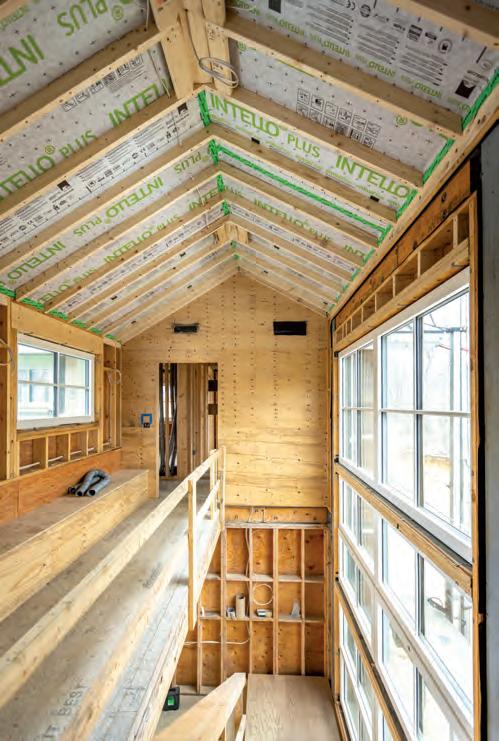
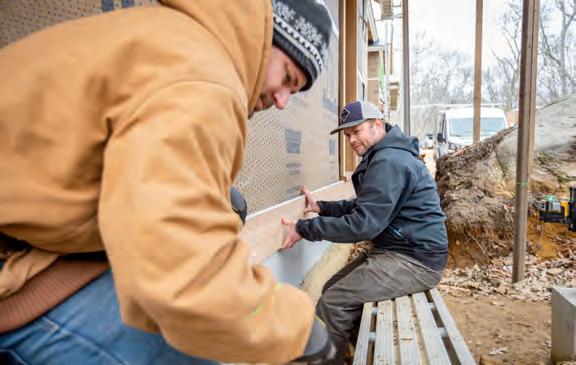
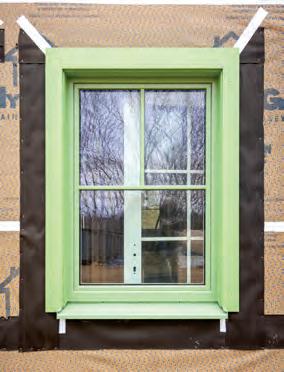
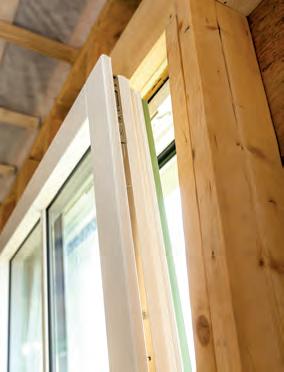
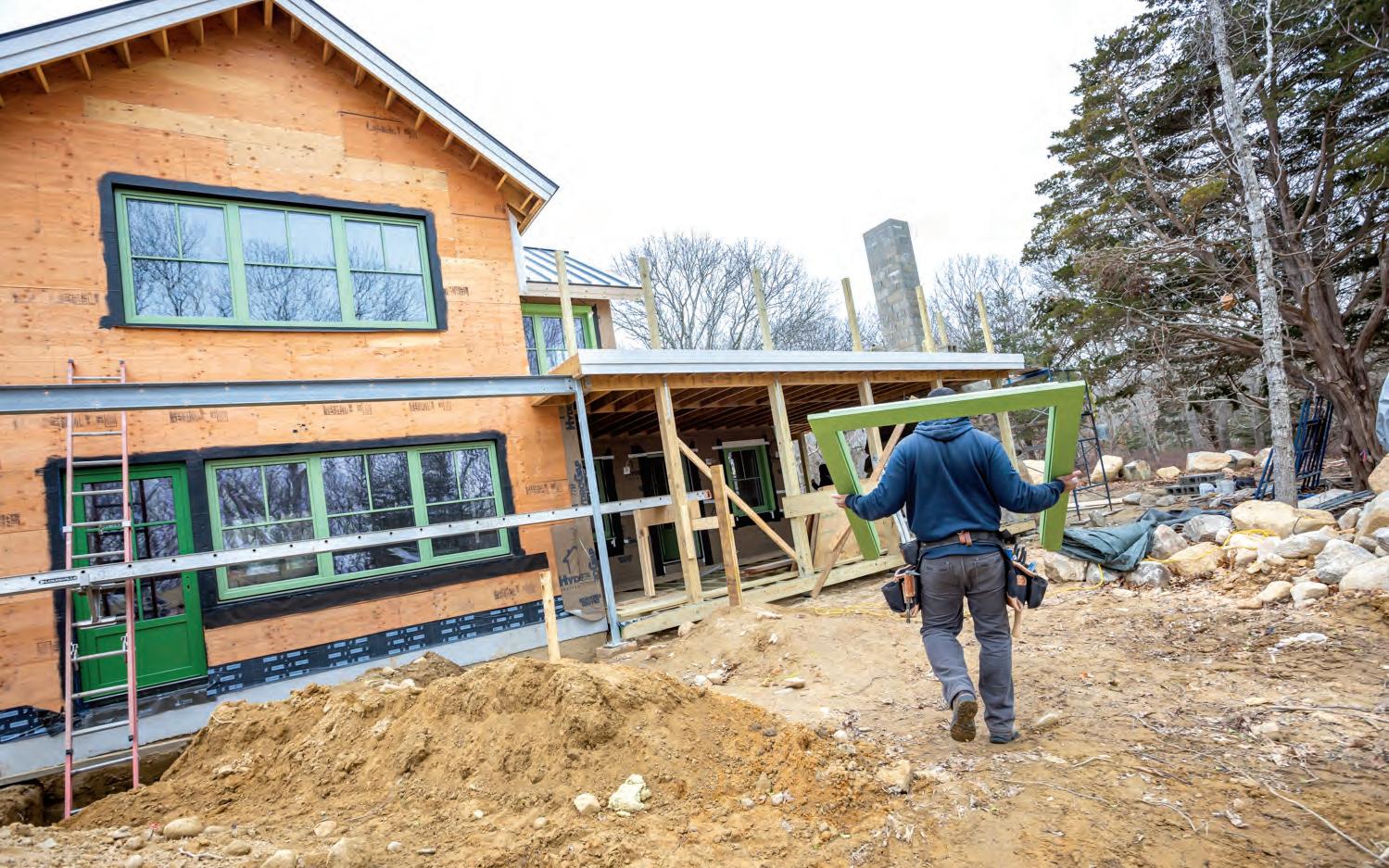
RIGHT AT HOME • FEATURE 30 MARTHA’S VINEYARD /SPRING 2023
RIGHT AT HOME:
THE BONES of DesignGreen
Healthy for the planet, healthy for the people.
Story by Mollie Doyle Photos by Randi Baird
As most of my friends know, I frequently practice “R to R,” a term my daughter Emma and I invented, which means looking at real estate magazines to relax. Our top picks are Architectural Digest, Dwell, ID, Elle Decor, and English Home. But one story I’ve always found missing in these publications is a full-length feature on the high performance green home-in-progress. Sure, Dwell or AD will highlight a net zero energy or LEEDcertified home, but more often than not,
the images and the story are mainly about the furnishings and the client’s desires for how they want to live in the space. While this is a valid focus, I yearn for an in-depth look at a home from a purely green design standpoint. Tell me about the engineering! How does it dictate design? What parts of the building process differ from those used in constructing a home that will use fossil fuels? Are elements of the design and engineering visually married?

I decided that if I wanted these questions answered, I’d have to write the
story myself. And this meant finding a green house while it was in the process of being built.
On an early morning winter walk in the woods, I came across a job site with a gorgeous house going up. I did a little trespassing (occupational necessity) and saw the name Farley Built on a machine outside. Farley Pedler’s contracting company is one of this island’s best high performance home builders. And, fortunately, the owners of this Farley Built home-in-progress
FEATURE • RIGHT AT HOME 31 marthasvineyard. .com
The house, shown here in architectural renderings, doesn't scream "high performance house."
ARCHITECTURAL RENDERING ZEROENERGY DESIGN
generously agreed to let BlueDot use it as an example of what green design can be, and how it works. I was delighted to learn that the home was designed by the Boston architectural firm ZeroEnergy Design, which, since its inception, has been dedicated to the practice of green building design — so dedicated to it that ZeroEnergy Design’s principal and coFounder, Stephanie Horowitz, refers to herself as a “stick in the mud.”
Farley and Stephanie are each delighted to be partnering on this project, to be collaborating with someone equally steeped in the technology of the green design world. “It’s really lovely to be working with someone with shared values,” Farley tells me. “I hear builders and clients alike complain about the energy code requirements. My feeling is, we can all be doing better. Our building code is the bare minimum requirement. Why aren’t we doing better? I see so much exquisite craftsmanship in the homes here. Why is this not extended to what we do with a home’s energy use?”
One of ZeroEnergy Design’s missions is “Designing homes and buildings that use 50% less energy than building code requires, in pursuit of energy independence.” Stephanie expands on this: “The reference to building code is a moving target as the code continues to improve. With a significant reduction in energy use, paired with roof-top solar, many of our single family homes produce as much energy as they use in a given year.”
The home I found in the woods will be a net zero building — the amount of energy used by the building on an annual
basis will be equal to the amount of renewable energy created on the site or obtained from a renewable energy source offsite. Net zero homes take advantage of technology such as heat pumps, high efficiency windows, renewable energy generation (solar panels for example ), fresh air systems, Energy Star appliances, WaterSense certified fixtures, efficient LED lighting, low VOC paints, under slab foundation insulation, and more impactful insulation practices overall.
Stephanie and her team worked with the homeowners to define their program of living and articulate their aesthetics — from the basics of how many bedrooms and bathrooms they’d want to what kind
of kitchen they like to cook in and whether or not they want to eat in an open space that relates to a kitchen or have the dining space be its own room. All of this was then folded into everyone’s ultimate goal: net zero energy.
The first thing I appreciated about this house in the woods is that from the outside, it doesn’t scream, “I am a high performance structure.” In fact, when I first came across the home and saw its classic roof lines and green window trim through the trees, I thought it almost looked like a classic old Vineyard home undergoing a gut renovation. I appreciated the way ZeroEnergy Design sited the home between towering oak trees and incorporated some of the Vineyard’s more classic architectural lines to make it feel as though it’s been here for a while, rather than like a spaceship that recently landed. (This said, I do also believe there are places in our landscape for modern lines.)
“The technical aspects of an energy efficient design do not have to dictate the aesthetic,” says Stephanie. “It can be a traditional New England vernacular or ultra modern. With this home, the design is recognizable — aspects of it are familiar and rooted in materials and in details that speak to a more traditional home on the Vineyard. We design with a commitment to making homes air-tight and super insulated so that they use a fraction of energy of a conventional home, and create a healthy and thermally comfortable environment. But it also has to delight the owner. This said, design that respects the planet and limits the amount of energy we use to operate it is, in itself, timeless.”
And when it comes to eliminating excess energy use, ZeroEnergy Design and Farley Built share a central idea: the primary mechanism for heating and cooling the home is the building envelope itself. First and foremost, they make the house air tight so that it can be

RIGHT AT HOME • FEATURE 32 MARTHA’S VINEYARD /SPRING 2023
How does the engineering in a green home dictate design? What parts of the building process differ from those used in constructing a home that will use fossil fuels?
The heating, cooling, and air circulation systems play a supporting role to the building's envelope.
a hyper-efficient body, holding in hot or cold air while circulating fresh air for its inhabitants. If there are drafts or punctures (such as a fireplace) in the structure, then it is less effective at holding heat and cool air. Concurrently, they design and install active systems — heating, cooling, air circulation — to play a supporting role to the building’s envelope.
building background. He started working with a framing company on the Cape during the summers in high school. (See our story from two years ago: bit.ly/farleypedler). "We would frame a house in a week; house, windows, doors, roof shingles, decks and then move on to the foundation next door." After graduating from UMass Amherst, he moved to the Vineyard
when it came to construction. That is when my journey started with more intention to what eventually became Farley Built. It wasn't until I did an affordable housing project with Island Housing Trust that I experienced working with another entity with aligned values. It completely reaffirmed what I had been working towards for so many years. It provided healthy, well-built homes that respected the environment and were affordable. That’s when I thought, ‘It's ok to bring your values to a higher standard with construction. This is what we all need to be doing more of.’”
For the last 18 years, Stephanie and her team have been working on their recipe for the best and healthiest high performance house. “Of course the technology has evolved, but we have grown up with it. This is the only way we have practiced architecture. We know of but have never actually practiced the energy wasting habits of traditional design and detailing.”
Farley comes from a more traditional
and “bounced around a little,” working at the Gannon and Benjamin boatyard, the South Mountain building company, and a small cabinet shop in West Tisbury. “I was trying to figure out what my path was going to be. It took a few years before I realized I had all the makings for becoming a builder.
“I am an environmentalist at heart,” he continued. “I knew we could do better
In 2010, Farley built his first high performance home. “It wasn’t perfect, but it had a HERS [Home Energy Rating System] Score of 35. This was before HERS was a requirement.” (A HERS score of 35 means that the home meets the National Green Building Standard and also meets the energy standards required for LEED certification, and is Zero Energy Ready.) As for this latest project, Farley says, “I was familiar with most of the technology and instruments ZeroEnergy specified for the project, but I had not worked with the air barrier membrane. We used a product called Mento 3000 to create an air barrier that was applied over the sheathing like any other traditional building wrap. I have to say it has been a great success.”
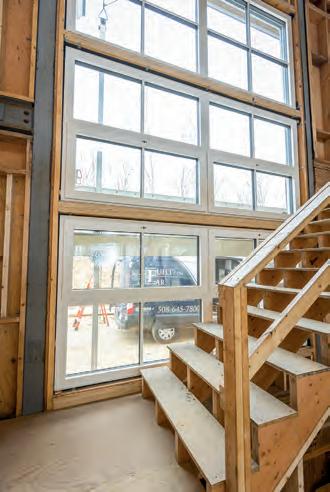

FEATURE • RIGHT AT HOME 33 marthasvineyard. .com
“My feeling is, we can all be doing better. Our building code is the bare minimum requirement. Why aren’t we doing better?
I see so much exquisite craftsmanship in the homes here. Why is this not extended to what we do with a home’s energy use?”
–Farley Pedler
The primary mechanism for heating and cooling the home is the building envelope itself.
The best way to describe the way ZeroEnergy Design engineered the home’s air tight envelope is to say it is built like a lasagna – layers of good materials put together.
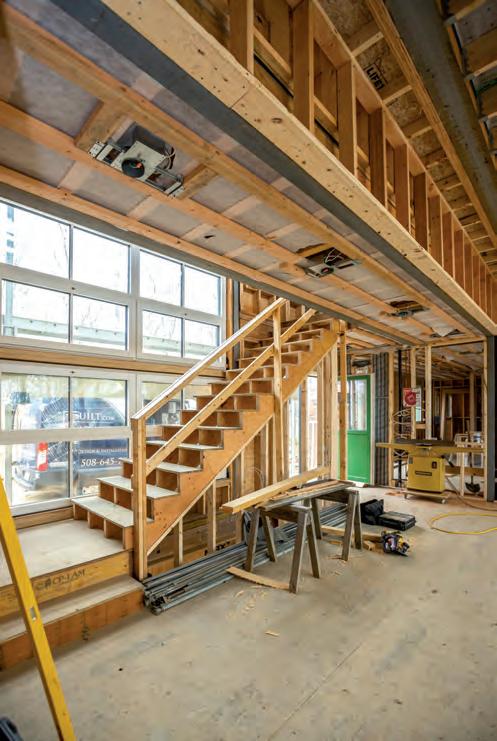
The recipe begins with an excellent foundation. When Farley and his team dug down, there was water in the southwest corner. So they started by laying down six inches of gravel for better drainage. Then, they insulated the foundations’s slab with four inches of EPS (a light but exceptionally effective insulation foam) covered by 10 Mil polyethylene sheeting. They also laid perforated pipes against the footing of the foundation and ran them to daylight to move the hydrostatic pressure (a fancy way of saying water pushing on the foundation) away from the house. Next, they sprayed the foundation with a Tremco waterproofing membrane and wrapped the foundation with four inches of Rockwool (a rock-based, fire- and soundproof mineral fiber insulation).
Now they were ready to build the next phase of the envelope. For the walls, Farley constructed a 2x6” stick frame, to which (moving from inside to outside) he added sheetrock with paint, paper cellulose insulation, one-half inch CDX plywood (a specialized plywood made for exteriors), Mento 3000 for the air barrier, four inches of Gutex wood fiber insulation (which Stephanie describes as a “warm blanket” for the home), then one-half inch CDX plywood again, then Hydro-Gap building wrap with all the seams taped, and finally, white cedar shingles.
The home’s roof has an equally substantial insulation formula. Going from outside to inside, there’s a metal roof that will soon house Panasonic solar panels, then a high temperature self adhering membrane, five-eighths inch CDX plywood, six inches of Gutex wood insulation, five-eighths inch CDX plywood again, 2x10 inch Spruce Pine Fir framing
wood, cellulose insulation, an Intello smart vapor barrier (its permeability changes to respond to changing humidity) with all seams taped, three-fourths inch wood strapping (a nailing surface for drywall), then, at last, five-eighths inch sheetrock with a skim coat of plaster and paint.
The house has Makrowin windows and
doors, which Stephanie describes as “well-insulated, triple glazed, allowing the light to come in while also keeping the heat in.”
“They [Zero Energy Design] did an excellent job of taking the window frame sizes into account and still keeping the home’s historical look.” Farley says. “And feel these doors. They are incredibly heavy.” Indeed, if you look at a door’s profile, it is at least five inches thick.
Once an airtight envelope has been established, the next phase is to bring in the heating, cooling, and fresh air systems that collaborate with the envelope to support the home’s environment. Most net zero homes employ heat pumps — mechanical appliances that use electrified compressors to move heat from one place to another (either lower temperatures to higher temperatures or the reverse.) In the winter, they convert cold air to warm air, while in the summer, they move hot air and replace it with cool Some may be familiar with the term “minisplit,” which refers to a single ducted or ductless system (these are the rectangular-shaped, often wallmounted machines you will see running in people’s homes). There are also ducted systems that are more integrated into a home’s heating and ventilation systems. Beyond not burning any fossil fuels, heat pumps are incredibly quiet and operate 200-300 percent more efficiently than propane or oil burning furnaces. They can save a homeowner a tremendous amount of money in the long run. According to Forbes Magazine, “A new heat pump would cost a homeowner $25,600 to buy and operate over fifteen years, compared to $26,900 for a replacement furnace that continues burning heating oil or $39,200 for propane.”
The home also has a mechanical ventilation system, or ERV (energy recovery ventilator), to take stale air out and bring fresh air in. This is critical for a tight house, where, without such a system,
RIGHT AT HOME • FEATURE 34 MARTHA’S VINEYARD /SPRING 2023
“With a significant reduction in energy use, paired with rooftop solar, many of our single family homes produce as much energy as they use in a given year.”
–Stephanie Horowitz
The house has Makrowin windows and doors, which Stephanie describes as “well insulated, triple glazed, allowing the light to come in while also keeping the heat in.”
carbon dioxide and even Radon can build up inside the home. Radon, an odorless gas naturally released from rocks, soil, and water, has been shown to cause lung cancer, so it’s important to install a passive radon venting system that only handles radon, along with a ventilation system that circulates fresh air. In this home, there are two ventilation systems that serve as the lungs for the home, moving fresh air in and throughout the house while extracting older, stale air. The basement also holds a Santa Fe Ultra 98 dehumidifier to mitigate our often damp climate.
Now that the home’s structure is intact and the mechanicals and air exchange system are in place, Farley and his team get to the fun part: building it out. Gustavo Simoes is doing the electrical work, which will of course include LED lighting. There will be an induction stove, convection wall ovens, and an Energy Star rated refrigerator and dishwasher.
Curtis Lavigne has installed and insulated copper pipes that will be connected to WaterSense certified fixtures. A flat roof that runs along the upstairs hallway can hold six inches of topsoil for plantings. John Casey will install the floors. Thiago Silva of TS Woodworking will do the home’s millwork and cabinetry. Micheal Cassiani has built an extraordinarily beautiful outdoor fireplace that flanks the home’s covered front porch and transforms it into an outdoor living room. And Tara Gale will do the landscape design.
One thing that struck me in my conversations with both Farley and
Stephanie was their consistent use of the word “healthy.” They use it when talking about not burning fossil fuels in the home. They note that there’s an induction stove and a gorgeous wood burning fireplace

outside because it is “healthier” for the home’s air and the people living in it. Nothing is getting burned inside. This language, along with the intentions and actions that evolve from a net zero goal, highlights the fact that a home that is healthy for the planet is also healthier for the people in it.
Perhaps you are thinking, “Well, if I had the money, of course I would do this too.” Here’s the best news: Farley estimates that this way of building adds only 10 percent to a home’s building cost. Ten percent! Not a whole lot when you compare the enormous energy savings over time and the vastly smaller environmental footprint of this home to a traditional home’s long-term impact.
“It’s important to embrace the beauty and the brains,” says Stephanie. “We need to design our buildings to respect our environment and the inhabitants. Both have to be loved and cared for. You have to do both. Aesthetics and functionality.”
I salute both Stephanie’s and Farley’s commitment to this goal and also celebrate the home’s owners who have made this choice. “What’s striking for me is that this is a seasonal house,” says Farley. “It’s not often that you have someone making a net zero energy commitment for a house that is not going to be their primary residence. They are taking a step to be role models for their friends, peers and children.”
WHAT YOU CAN DO
Find out about how to get affordable net-zero, or energy-saving materials and appliances: Cape Light compact’s “residential rebates” page (.capelightcompact.org/resrebates) explains how to get a home energy assessment, how to apply for a “Mass Save Heat Loan,” and myriad options for making your home less reliant on fossil fuels.
FEATURE • RIGHT AT HOME 35 marthasvineyard. .com
The best way to describe the way ZeroEnergy Design engineered the home’s air tight envelope is to say it is built like a lasagna –layers of good materials put together.
Now that the home’s structure is intact and the mechanicals and air exchange system are in place, Farley and his team get to the fun part: building it out.
Toilets Room For Cha n ge:
We support eco-friendly flushing for all.
Story By Mollie Doyle

Editor Jamie Kageleiry created this image and the one on page 38 with the help of an artificial intelligence illustration program called DALL-E. The DALL-E AI system creates images and art from a description in natural language. The prompt for these illustrations was "Create an image of a toilet in a field by the sea in the style of Thomas Hart Benton."

36 MARTHA’S VINEYARD /SPRING 2023 ROOM FOR CHANGE • TOILETS
IIn our Room for Change series, we look for relatively inexpensive ways to make sustainable, climate-mitigating improvements to our homes that have a big payoff. When it comes to toilets, we believe we’ve found the royal flush of sustainable ideas. No matter who we are or what kind of homes we have, everyone needs a place to “go,” which means that investing in toilets in a more environmentally thoughtful way can make a big difference.
Low Flow
According to the Environmental Protection Agency (EPA), an astounding thirty percent of a home’s indoor water consumption can be attributed to toilets. Thirty percent! Older toilets use up to 6 gallons per flush, whereas new models use 1.28 gallons. Replacing an old toilet with a new one is therefore a relatively simple way to reduce home water consumption. This is especially important if you have a toilet that runs or leaks. Leaky toilets (And sinks! So pay attention here, too) can waste up to 180 gallons of water PER WEEK.
The EPA’s WaterSense program estimates that replacing old toilets with more efficient models can “reduce water used for toilets by twenty to sixty percent — that’s nearly 13,000 gallons of water savings for your home every year!” Newer toilets can also save more than $110 per year in water costs, or $2,200 over the lifetime of a toilet. And here’s the big, super fact that WaterSense calculated: “If all the inefficient toilets in the United States were replaced with WaterSenselabeled models, we could save 520 billion gallons of water per year, or the amount of water that flows over Niagara Falls in about 12 days.” And keep in mind that they are calculating this with the EPA low flow standard set in 1992, which is 1.6 gallons of water. If we installed the newer, more efficient models that use only 1.28 gallons, even more water would be saved.
No Flow
The other option, of course, is a toilet that uses no water. If your home (or a home
you are designing) allows for it, you could install composting toilets. As implied by their name, these systems compost waste on site, turning it into stable dry and liquid end-products that can be used as fertilizer. The toilet looks ordinary, but instead of having water in a bowl that moves waste through pipes when flushed, composting toilets have a chute that leads directly to a plastic holding tank. The website of Clivus New England (a major composting toilet manufacturer and installer) explains the science: “The Clivus system uses aerobic mesophilic decomposition to slowly break down both urine and feces into stable compounds within the composting system.”
where they come and deal with it.”
He does concede that installing composting toilets is a bigger deal than putting in conventional toilets. The “straight drop” composting toilets must be situated directly above the waste catchment area so toilets in a home must be designed to be directly above one another or have a pipe that drops straight down and directly into the basement. And even foaming composting toilets, which use foam to move waste, can only move it a few horizontal feet. This expands the possibilities for where waste can be collected and stored, but not by a lot. (A conventional toilet using water can move waste for “a much more
When I talked about composting toilets with Newell Isbell Shinn, South Mountain Company’s Director of Production, he told me, “Every time I fill out an environmental footprint* for our family, I see how having a composting toilet makes a huge impact on our water use. It’s nonsensical to pump clean, fresh water into the house, pollute it, and then pump it back out of the house. Having a composting toilet has minimal impact on my daily life. A composting system actually pulls odors away from the bathroom, leaving a cleaner, fresher space. Some people use shavings with every use, but you can also just add shavings to your Clivus weekly or monthly. And there are varying degrees of interaction you can have with your composting toilet. You can be hands-on, or you can have a service contract with Clivus New England
significant distance in the home.”) This makes retrofitting an existing home with a composting toilet challenging, and Shinn admits that, “In the 7 and ½ years I have worked for South Mountain, we have not installed a composting toilet. It may be because people can’t quite get over having a storage tank with waste inside their homes. Mostly, though, I think we got out of the habit of designing them in. This conversation is an inspiration to start again!"
W hen my husband and I were designing our home, we were not put off by the idea of waste in a tank in the basement, and our original concern that composting toilets always needed “action” (what if we had to be away for two months?) turned out to be a myth. What ultimately drove our choice to use a conventional water toilet system was the design factor (the “straight drop” system’s requirement that
37 marthasvineyard. .com TOILETS • ROOM FOR CHANGE
“If all the inefficient toilets in the United States were replaced with WaterSense labeled models, we could save 520 billion gallons of water per year, or the amount of water that flows over Niagara Falls in about 12 days.” – WaterSense
composting tanks sit directly below our toilets) and the installation cost, which at the time was too much for us.
W hen I spoke to Joe Ducharme at Clivus New England, which installs and services most composting toilet systems on the island, he told me that installing a typical residential Clivus system currently costs between $20-$30,000. The maintenance costs for a Clivus depend on the demands on the system. He said, “For a McDonald’s, we are there twice a month, but some of our customers only have us come out once a year, spending about $300 for this.” The West Tisbury Library, which has a foaming compost system, has Clivus New England service their system about four times a year. If you choose to follow the no-flow path, Clivus New England are the people to talk to.
But, I wondered, if you choose the low flow path, which is the best toilet to buy? I reached out to nine local plumbers to talk about conventional water toilets, because who knows better than the folks who install and fix them? Five did not call me back. Fair enough; It’s winter, and they’re probably busy fixing broken heating systems. Two chatted with me for a few minutes but said they didn’t want to go “on the record.” Finally, I found two plumbers who were generous with their time and willing to share their experience. Curtis Lavigne and David Bettencourt had a lot to share, all of it valuable.
First, every plumber (on and off the record) gave Kohler the highest marks for longevity, effective flushing, and overall

My advice, in
performance. Curtis told me, “I say Kohler hands down. I get all these fancy jobs for Toto [a high end toilet brand]. The way they mount to the floor, it’s a total pain. And each model has a different mounting spec. Plus with Toto there are so many mechanisms with so many variations. They are hard to stock parts for. Meanwhile Kohler toilets have more universal systems and parts. And the ones that only use 1.28 gallons per flush, flush really well and hold up.”
Depot or Lowe’s. He explained that while these stores advertise having higher-end products like Kohler toilets, and their models look exactly like the Kohler models at a plumbing supply, the superstore versions are made more cheaply and won’t hold up as well.
W hile he didn’t agree with Curtis about Toto, David did have reservations about wall mounted toilets. These are the toilets where the frame and tank are inside the wall, and one only sees the bowl. David said, “Yes it is more streamlined and easier to clean around, but to work on them, you only have an access plate area of about 4x8 inches. You have to have little fingers. Plus, you cannot put these toilets on outside walls, as the tank will freeze. In my opinion, they are problematic. Plus they remind me of jail toilets.”
David said he liked Kohler above all other toilets as well. He explained, “They have a siphon, so when you flush the water, it points toward the outlet hole in the bottom of the tank. It doesn’t swirl. This makes them much more effective.”
David advises always buying toilets from a plumbing supply company, rather than from a low-cost superstore like Home

nutshell
As for the single/double flush toilets that have two buttons on the top (one using .8 gallons per flush, the other 1.6 gallons), both Curtis and David wondered how many people really take advantage of both flushing options. While they have no evidence, both suspect that most people opt to use the double more often than the single flush, just to be on the safe side. “This is why I often recommend just getting a super efficient toilet that uses just 1.28 gallons.” Curtis says.
Curtis also pointed out another good reason for Martha’s Vineyard residents to invest in low flow toilets: less water means less stress on our septic systems. “So many people here have septic systems, and it’s not good to be sending extra water into the septic if you don’t need to. Too much water can diminish the septic’s ability to effectively treat the wastewater. And it’s is more wear on the system.”
W hen it comes to cost, replacing most toilets (unless there is significant damage — rot, etc. — around the base of the existing toilet) takes about an hour and costs a homeowner the price of a toilet plus their plumber’s hourly rate. So replacing your toilet is a low-cost investment with a big upside: saving hundreds of gallons of water a year and the energy it costs to pump that water.
ROOM FOR CHANGE • TOILETS
toilets
WaterSense
1. Even if you don’t/can’t invest in a new toilet now, fix your leaky
… and sink. 2. Invest in a
low flow toilet if you do replace one.
3. Buy from a plumbing supply company, where you know you’ll get the best-made products.
home and budget
in a no-flow,
There are now many sites dedicated to helping you calculate your environmental footprint. A FEW WE LIKE:
4. If your
allow, invest
composting toilet
International:
• Conservation
Conservation.org
• CarbonFootprint.com
Cool climate calculator is also good:
• Berkeley’s
Coolclimate.berkeley.edu
a
38 MARTHA’S VINEYARD /SPRING 2023
Continued from page 48
about the dynamic mix of people, young and old, who have come together over the last few years to develop the legislation that would enable revenue collected from real estate transfers to create more affordable housing on the Island. “We’ll use that money for existing dwellings, with super high [environmental] standards. “[It] is going to end up being a statewide initiative, and affordable housing is such a crisis in all the places where people actually want to live, it’s not like [just] the Vineyard and Nantucket. It’s all over this country.”
On business being a positive force

For Abrams, the Vineyard is “kind of like a laboratory. And so the learning … has come from working in this community, and doing public initiatives, and building a business that really serves the community and its employees. Those lessons learned locally have a wider application. … Business is the most powerful force in the world — the one that has the potential to change the world most completely and quickly due to its lack of constraints. South Mountain demonstrates, as do other 6,500 B-Corps, how business can be, if it chooses to, a force for good in all those arenas.”
before that. I don’t think we’re going to live with that forever — that is going to change. It was Gen Z [who started it all]. So I want to fight with them.”
On challenges
“When I arrived on the Vineyard, it was a very different place than it is today. Zoning was brand new, as was the Martha’s Vineyard Commission, [and] the Land Bank didn’t exist. Solar was the realm of
On what’s constant, and what’s next
Abrams describes the business he’s moved on to since his retirement from South Mountain (where he remains on the board of directors). He and his partner, Kim Angell, who for two decades owned Vineyard Tax Matters, have launched a consulting firm. They’ll help people on-Island and beyond with worker-ownership transitions, financial literacy, business operations, leadership development, and community activism.
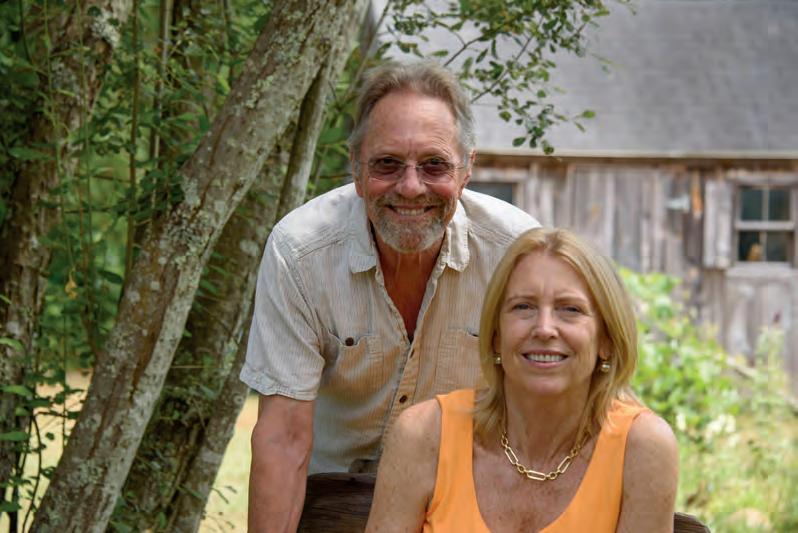
And there’s family.
“So I have two kids, both of whom are on the Vineyard, and six grandchildren. All grandsons. Wow. All of them except one lives here ... And so Kim [who has three kids] and I have spent the last two years merging these two sprawling families. And it’s been quite the adventure.”
On Gen Z
“I see Gen Z as our greatest hope … and I’m an eternal optimist. Despite what we see on the news, the world has become a better place in the time that I’ve been alive. And I think that will continue. And I think this started with Occupy [Wall Street], when people became conscious that wealth is being concentrated in the [top] 1%. I don’t think that was even on the radar screen
the backyard experimenter and NASA; there was no commercial solar industry. Affordable housing wasn’t an issue, cheap land was available, family properties could be divided, you could build a shack in the woods. And climate change was not recognized as an issue. It was such a different time. It feels to me like the biggest change over the past half century is the emergence of climate change as the existential issue of our times.”
On making a difference
“Figure out where your passion really is, and put your time in that passion. Do something small that feels important. And … celebrate modest successes. We don’t have to change big things — we only have to change little things. If a lot of people change little things, that adds up over time.”
LOCAL HERO 39 marthasvineyard. .com
“Really, what the housing issue is all about [is] people conservation, conserving the community. So there’s land conservation, [and] there’s community preservation as well.”
Abrams and Kim Angell have merged their sprawling families and have been driving forces to create the Housing Bank.
PHOTO BY JEANNA SHEPARD
WHAT’S SO BAD ABOUT
COFFEE
In search of sustainable caffeine.
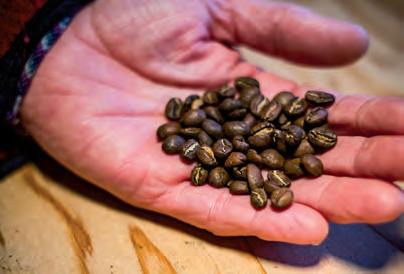
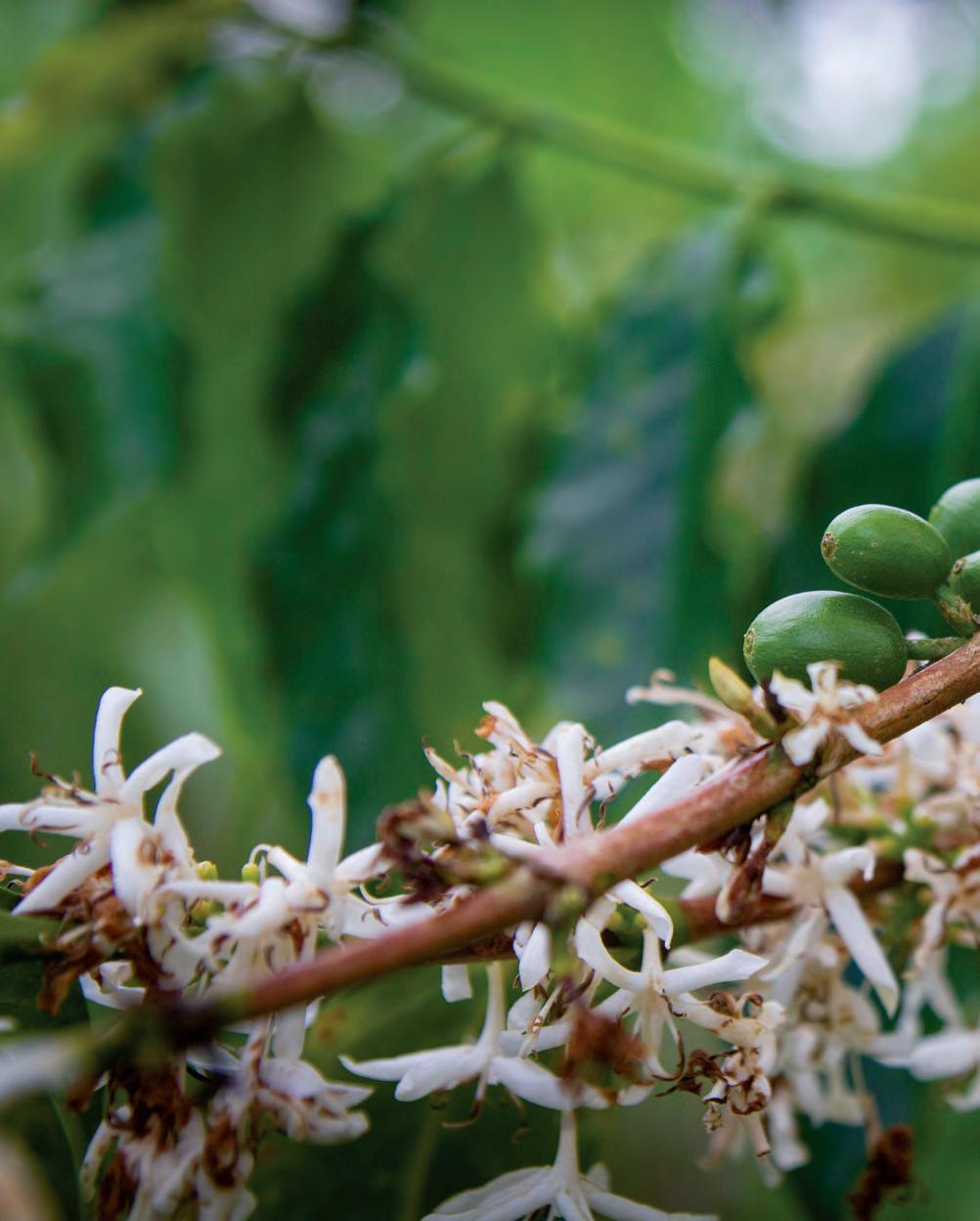
WHAT'S SO BAD ABOUT COFFEE • FEATURE 40 MARTHA’S VINEYARD /SPRING 2023
Story and Photos by Sam Moore
When coffee caught on in Europe in the 1600s, it seems to have given schemers and revolutionaries of all kinds a manic boost, switching as they were from the inebriated haze of morning beer and wine to the fog-cutting clarity of what one satirical pamphlet from 1674 called “that Newfangled, Abominable, Heathenish Liquor called COFFEE.”
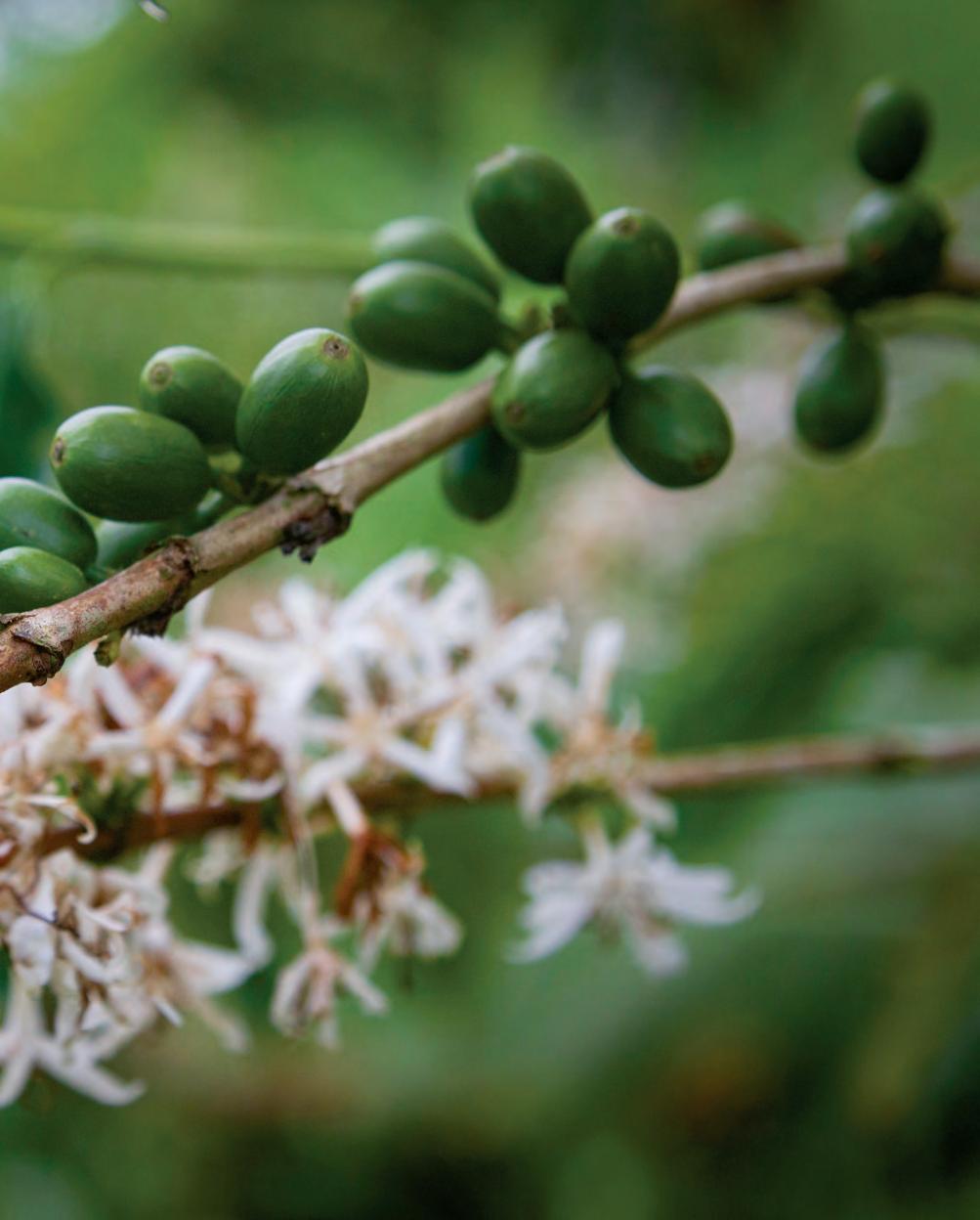
FEATURE • WHAT'S SO BAD ABOUT COFFEE 41 marthasvineyard. .com
If you crave caffeine, and you can’t get enough of it from a bar of chocolate (10 milligrams), a jar of kombucha (15 milligrams), a can of Coca Cola (35 milligrams), or a bag of black tea (45 milligrams), you might choose coffee; a basic homebrewed cup will zap you with around 100 milligrams of the invigorating alkaloid. If you get your coffee from a cafe or drivethrough, you’re likely to double or triple that amount in a sixteen-ounce cup from Starbucks or Dunkin’ Donuts.
We treasure coffee for its bright-eyed, energizing effect, so much so that in America, more people have had coffee in the past day than have had tap water, according to a recent poll by the National Coffee Association. The beverage is simple, just beans and water, but unless you live in the tropics, the process of getting it into your cup is anything but.
In America, where almost everyone is now enjoying so-called “premium” beans, a good origin story seems almost as important as the coffee itself. Labels and standards abound, alongside claims about the social and environmental context of a particular batch, a particular roast.
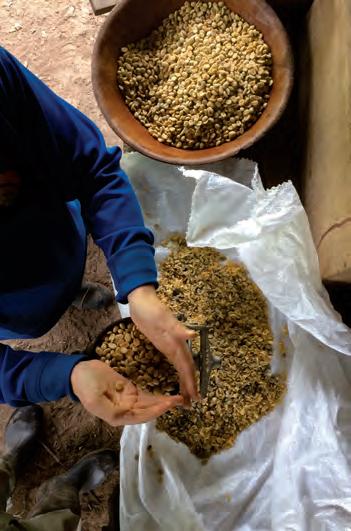
Opinions about coffee can be as strong as its flavor. The plant is a global commodity, grown in more than fifty countries, bought and traded on an almost unimaginable scale. Reading about it, I found myself down a rabbit hole of ecology, history, geopolitics, and the ever-changing agricultural landscapes involved in cultivation. There are huge industrial monocultures, yes, but also many millions of small farmers. There are megacorporations and artisans. There is habitat destruction and habitat creation. Almost every possible configuration of labor and stewardship exists somewhere in the global supply chain, and it’s hard for any one person to get a handle on it.
For a gut check, I sought out Todd
Christy, of Chilmark Coffee Company. He’s been roasting for more than a decade, and his coffee has run the gamut of certifications, from USDA Organic to Rainforest Alliance and back. “In a busy summer,” he said, “I buy more than a ton of coffee every two weeks.”

He sources his beans from Brazil, Columbia, Guatemala, and Ethiopia, among the most abundant exporters in the world, and also from less prolific ones like Rwanda and Burundi. “As a buyer, I want to know that who I’m working with is doing the best that they can, within the limits of making a living, to present a product that isn’t destroying our environment,” Christy said. More than certifications, he relies on trust relationships with a variety of suppliers — almost all shade-grown, some organic, some not. Some are serious enough about how their beans are grown to use the word “terroir.”
Coffea arabica, which is probably what you’re drinking if you live in North America, makes up about two thirds of coffee grown around the world. Elsewhere, you’re just as likely to be sipping Coffea canephora, known commercially as robusta, a hardier species which grows in full sun and which is used to make instant coffee like Nescafe. Arabica is endemic to East Africa, robusta to the Congo.
The coffee bean is the seed inside the fruit of the coffee plant. Coffee cherries, as the fruits are called, were at first picked
WHAT'S SO BAD ABOUT COFFEE • FEATURE 42 MARTHA’S VINEYARD /SPRING 2023
“As a buyer, I want to know that who I'm working with is doing the best that they can, within the limits of making a living, to present a product that isn't destroying our environment.”
–Todd Christy, Chilmark Coffee
Todd Christy, of Chilmark Coffee Company, has been roasting for more than a decade. Right, a worker in Ecuador loads coffee beans into a manual shelling machine.
wild, growing in the shade of cloud forests in the highlands, and used in various ways as a stimulant; later coffee beans were cultivated to transcendental effect in Yemen, used by Sufi mystics during long, latenight ceremonies. In the Ottoman empire, where coffee gave rise to hundreds of lively coffee-houses, the drink was periodically outlawed for its rabble-rousing tendencies.
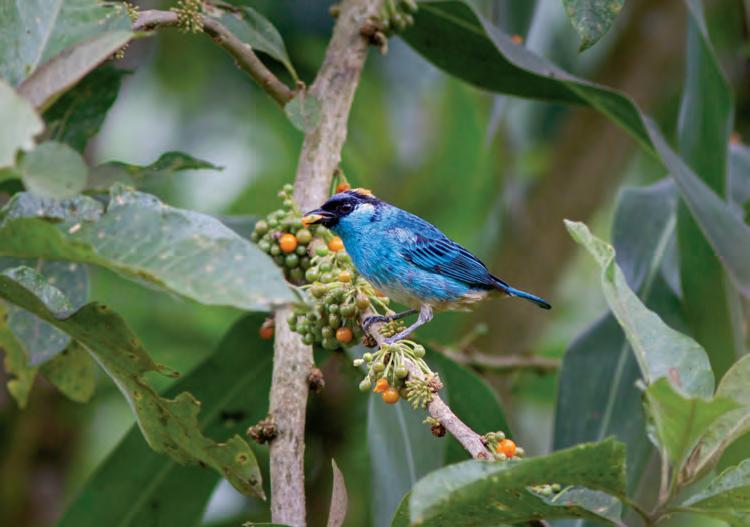
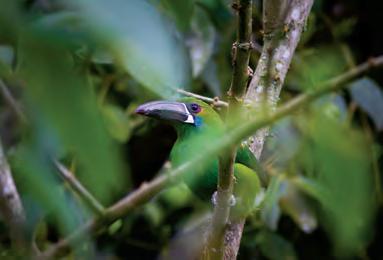
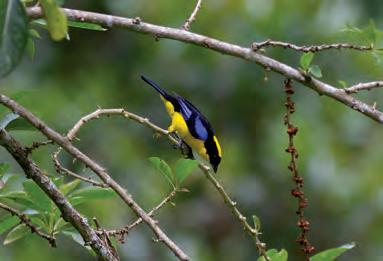
The name Mocha comes from the port on the Red Sea where the Ottoman empire shipped coffee beans from jealously guarded plantations in Yemen. As coffee spread from the Arabian Peninsula to India and Europe, coffee plantations followed. The Dutch and English East India Companies dragged the crop along the bloody contours of the colonial slave trade, part of a plantation starter-kit that also included sugarcane,
wheat, and tobacco. Another nickname, “Java,” is a reference to the Dutch plantations in Indonesia.
When coffee caught on in Europe in the 1600s, it seems to have given schemers and revolutionaries of all kinds a manic boost, switching as they were from the inebriated haze of morning beer and wine to the fog-cutting clarity of what one satirical pamphlet from 1674 called “that Newfangled, Abominable, Heathenish Liquor called COFFEE.”
It’s frequently mentioned that Voltaire drank dozens of cups a day, possibly up to 50, and he wasn’t alone in taking theoretical flights of caffeinated fancy — Kierkegaard, Kant, and other European philosophers did the same, not to mention revolutionaries hatching plans in coffee houses across
continental Europe. Wealthy merchants gathered to drink it at English coffee houses that turned into stock exchanges, financial hubs that have remained in control of the global coffee trade ever since.
Of course, the coffee that Voltaire drank had been grown in Haiti, a French colony which at the time produced 75 percent of the world’s coffee. Coffee helped inspire a revolution there, too, grown as it was by enslaved people who rose up to form their own country, which became the first nation in the Western Hemisphere to permanently ban the practice of slavery.
So historically, the effects of coffee on human society are mixed, fomenting intellectual breakthroughs and liberation on the one hand, plantation slavery and warfare on the other. Coffee traced the course of empire and colonization around the world, spreading along veins of trade and conquest whose branching paths still outline the industry today. Arabica takes center stage in most of this history, but robusta, which didn’t catch on widely until the 1800s, eventually caught up. Every place I’ve ever traveled has had at least a plastic jar of Nescafe.
So why does this history matter? As the 21st century beneficiaries of a seamless global coffee delivery system, we might consider geography an afterthought — country of origin is an adjective like “fruity” or “phenolic.” But consider that coffee is still produced mostly in the tropics, and still
FEATURE • WHAT'S SO BAD ABOUT COFFEE 43 marthasvineyard. .com
Some specialty roasters and suppliers have eschewed certification in favor of direct relationships with farmers, skipping the global commodity market and cutting out most of the middlemen — a technique that can put much more money in the farmer’s pocket if things work out.
Writer Sam Moore worked on "lovely farms where arabica plants grew in food forests alongside bananas and papayas, fringed by lush cloud forest and wildlife — landscapes hospitable to a mind-boggling number of colorful birds."
consumed mostly at higher latitudes. The places sending the most beans abroad are Brazil, Vietnam, and Columbia, and places importing the most are the United States and the European Union, according to the United Nations FAO. Coffee still involves extensive land and cheap labor, and often also an imbalance between producer and consumer. You might be paying little more for a cup of coffee than the farmer who grew it was paid for a kilogram of beans.
Christy asks: “Are they getting paid well enough to live? Are their families okay? Are they able to live off of this business and are they reinvesting in their own communities, like we talk about here on Martha's Vineyard?”
Several years ago, I had the good luck to work on a few coffee farms over a few months in Ecuador. Sometimes, I drank the finest coffee I had ever tasted, brewed on site after being dried and sorted by hand by people making coffee as just one part of a thriving landscape. Other times, I drank old Nescafe (robusta) while planting artisanal coffee (arabica) alongside migrant workers who should have been making a lot more for these long hours in the sun.
With every environmental issue, and with the virtuous adjectives that have come to surround the commodities that we consume, context matters. I worked on lovely farms where arabica plants grew in food forests alongside bananas and papayas, fringed by lush cloud forest and wildlife — landscapes hospitable to a mind-boggling number of colorful birds. Fruit-enriched agroforestry operations like these, which are often found on shaded coffee farms, can
provide a 50 percent higher density of bird species than that found in the already-rich ecosystems of shaded coffee in general.
I also sweated under the hot sun in the hills of the Galapagos, picking “shadegrown” and “organic” coffee to be sold to affluent tourists in Santa Cruz, an Island
alternative to much more extractive land use — ”the next best thing to a natural forest,” according to the Smithsonian. In a landscape that could be cleared for pasture, or torn up for an open-pit copper mine, coffee can keep valuable ecological connections open. In another context, it might be just another cash crop, displacing valuable carbon sinks, devouring biodiversity, or displacing other kinds of agriculture of more value to the local community.
Coffee certifications are one way to navigate all of this. Bird Friendly coffee is perhaps the most rigorous — it’s certified by the Smithsonian, which uses royalties from the labeling program to fund research on tropical migratory birds. It requires farms to meet a range of criteria, like having native trees and plants and maintaining structural diversity in the forest canopy. These farms also have to be USDA organic, and the two standards combine to meet a pretty high bar.
port and hub for eco-tourism. Appealing as these beans may have been to conscientious travelers, they were grown on land where 90 percent of the native vegetation — some of the most unique tropical dry forest on the planet — had been cleared. Half the species in this type of forest are endemic, found only here on the archipelago that inspired Darwin’s theory of evolution. Maybe the tourists should have been drinking Nescafe instead.
In one context, coffee might be a good
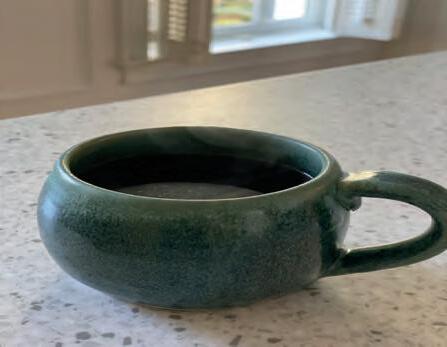
Other certifications include Rainforest Alliance, Fair Trade, 4C, and the in-house labels created by bigger coffee brands. They all promise more ethical coffee for consumers, and better prices for farmers — by setting price floors to buffer against market fluctuation, or by encouraging consumers to pay a premium for the coffee’s label.
But some farmers who go through the expensive process of a certification don’t get the benefits they hope for: The retailer may benefit the most from the price premium, not the farmer, or maybe there is more certified coffee in the market than there are conscientious consumers, so the beans are sold as conventional coffee at the conventional price.
Christy, who operated as a certified organic roaster for a few years, and who also sold Rainforest Alliance coffees, admitted that he’s a bit cynical now about the value of these certifications. “It's hard to know for sure unless you are the person who's flying to all of these places to buy your coffee,” he said.
On that principle, some specialty roasters and suppliers have eschewed certification in favor of direct relationships with farmers, skipping the global commodity market and cutting out most of the middlemen — a technique that can put much more money in the farmer’s pocket if things work out. Christy relies on trusted importers of green coffee. “They're meeting producers, they're checking out exactly how it's all done. And so I trust them,” he said.
Climate change is on the horizon, too — it could reduce the area suitable for coffee
44 MARTHA’S VINEYARD /SPRING 2023
WHAT'S SO BAD ABOUT COFFEE • FEATURE
So historically, the effects of coffee on human society are mixed, fomenting intellectual breakthroughs and liberation on the one hand, plantation slavery and warfare on the other. Coffee traced the course of empire and colonization around the world, spreading along veins of trade and conquest whose branching paths still outline the industry today.
PHOTO JAMIE KAGELEIRY
cultivation by about 50%, according to one study. Since coffee plantations can have an economic lifespan in excess of thirty years, the plants going into the ground now will live to experience these changes.
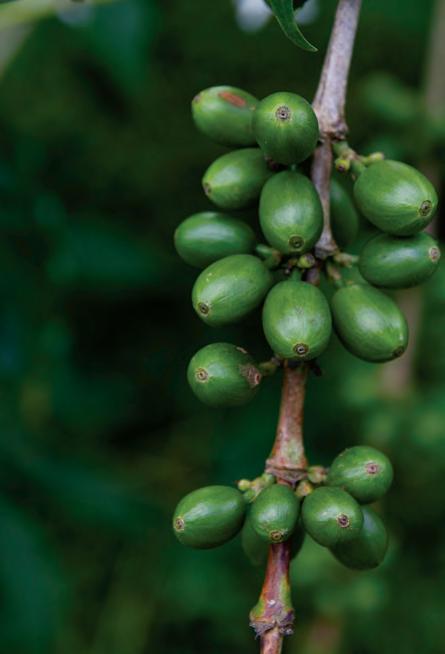
Of course, for the roasters and businesses that sell coffee at the end of the supply chain, there is another important dimension of environmental impact: consumer waste. Chilmark Coffee is a regular presence at the West Tisbury Farmers Market, and Christy said, “I realized at some point that at the end of the market, probably like 60 percent of the garbage was my garbage.”
“It put me back on my heels a little bit,” he said. Even when he offered a one dollar discount to people who brought their own cups, only a small handful out of hundreds took advantage of it — and they were the same people every time.



It’s hard to remember to be prepared, Christy said. He himself is not immune to the happenstance of wanting a coffee on a whim. “It's a whole chain of things and events that lead you to walk out of that place with that paper cup,” he said.
Paper cups, plastic cups, styrofoam
cups, plastic cup lids, straws, Keurig cups — billions and billions of them wind up in landfills each year. Around six million tons of coffee grounds are dumped each year — with nitrogen, potassium, magnesium, phosphorus, and other nutrients, pulled by the coffee plant from rich tropical soils, shipped around the world, and thrown in the trash.
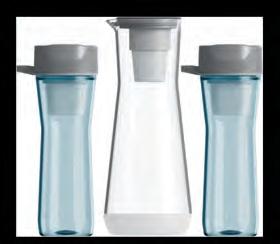
Christy uses compostable packaging for his labels and bags, and in general many businesses are switching to compostable cups. Waste management and municipal composting systems are finding ways to divert this organic material (including the nutrient-rich grounds) in a more useful way.
The good news is that in researching this article, I could barely read anything about coffee that didn’t also mention sustainability and human wellbeing, and many people are working hard to improve both while still making good coffee. And not all of it costs a fortune.
“I still don't have the most expensive coffee on the shelf, which I still find kind of amazing,” Christy said.
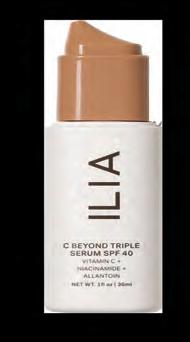
SO WHAT CAN YOU DO?
• Take a good look at what your preferred coffee says about sourcing and certifications

• Whatever the certification, look for coffee with a simple and transparent supply chain



• Think about legislation to clean up supply chains and stop deforestation, like this law just passed in the EU
• Avoid k-cups at home, and use a re-usable mug when possible
Dear Dot: How do I find sustainable coffee: bit.ly/Dot-coffee
FEATURE • WHAT'S SO BAD ABOUT COFFEE 45 marthasvineyard. .com
Buy less, but when you do — buy better. Shop the BuyBetter Marketplace Sign up for Bluedot Living’s BuyBetter Marketplace, a biweekly newsletter that navigates the confusing world of stuff.
In
bluedotliving.com/marketplace
a world of disposable goods, it’s hard to know which products are sustainable. At Bluedot, we do the legwork for you by selecting items made with regard for the planet and its people.
Cruising with Currier
JUDY BELUSHI PISANO AND HER CHEVY VOLT
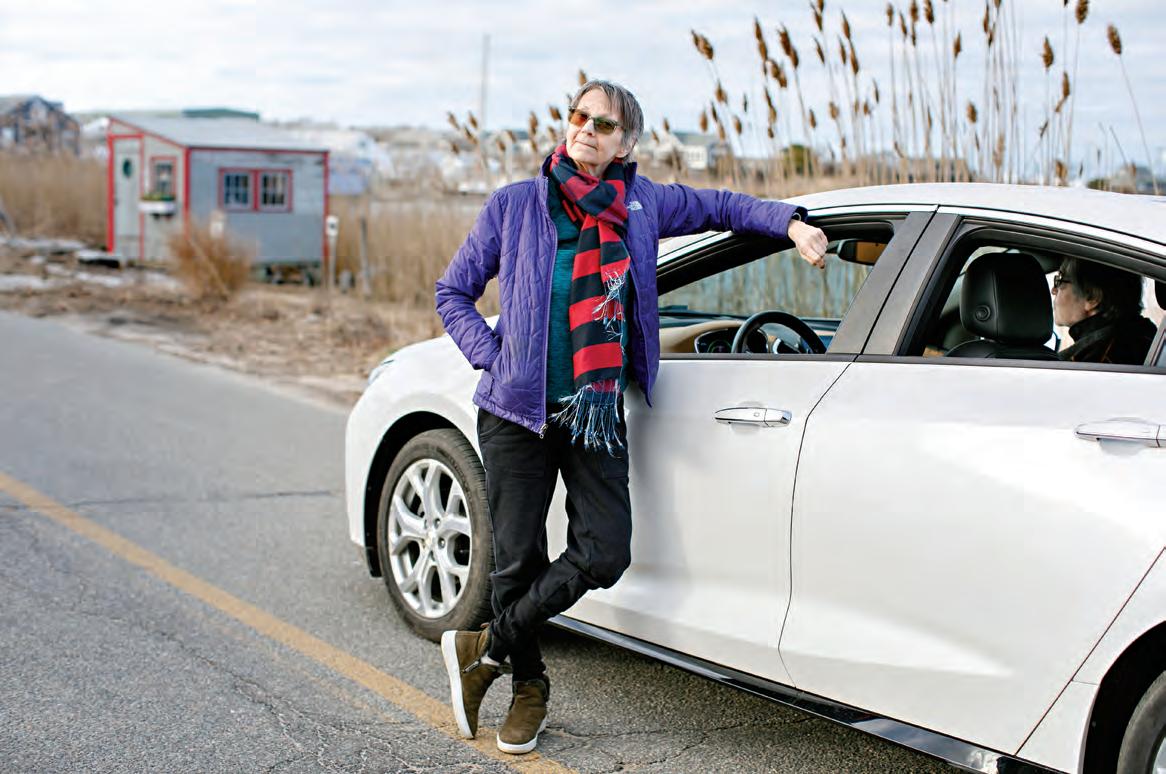
II originally met Judy Belushi Pisano, widow of the late John Belushi, when I was working on a project for the Rhythm & Blues Foundation, an organization dedicated to assisting R&B artists who, despite having a tremendous impact on the world through their music, were never fairly compensated for their work. My art director partner and I worked with Howell Begel, a Washington attorney, part-time Islander, and founder of the Rhythm & Blues Foundation. Judy also worked with Howell and was put on our committee.
Judy and I recently discussed working with the Rhythm & Blues Foundation and agreed that while of course it was a noble cause, it also came with some pretty hefty perks, such as getting to see R&B legends Ruth Brown and Little Jimmy Scott in concert, and attending an amazing board meeting with Ray Charles, Bonnie Raitt, Smokey Robin-
son, and co-founder of Elektra Records Ahmet Ertugen.
Our work with the foundation ended several years ago, but a random meeting with Judy last summer gave us a chance to work together again — this time for my “Cruising with Currier” column. Judy was playing the ukulele and opening for the reading of a one-act play by Gwynne McCallister at the Waterworks on Lake Tashmoo. In Judy’s opening remarks, she mentioned that she had a history of driving EVs, so naturally, I asked her if she would like to “cruise” sometime.
We agreed to meet at her house to go for our ride. Judy lives off Lagoon Pond in roughly the Hines Point area, just down the road from the Martha’s
Vineyard Museum. Our ride consisted of a little jaunt around the neighborhood, with glimpses of the Lagoon and a special stop at the little fishing shack at the end of Skiff Avenue that has always been a personal favorite of mine.
We were joined by photographer, Randi Baird, who had just flown back from California, where she was shooting for Bluedot San Diego and Bluedot Los Angeles, two of our new satellites (along with Martha’s Vineyard and Brooklyn, NY).
Judy’s current car is a 2018 Chevy Volt, the fourth electric or hybrid car (following two Toyota Priuses and another Chevy Volt) that she’s owned in the past 20 years. “I may not be the world’s greatest authority on EVs,” Judy said, “but I
46 MARTHA’S VINEYARD /SPRING 2023
“The Volt had a better pickup than the Prius,” Judy said, “it had better visibility and in terms of roominess, I’d rank it ‘five Buddha heads.’ I once transported five Buddha heads by putting the tailgate down in the back and we all fit in comfortably.”
Our columnist catches up with an old friend to talk R&B and EVs.
Written by Geoff Currier Photos by Randi Baird
may be the most experienced.”
Judy was first introduced to a Chevy Volt when she was off-Island in her Prius visiting her daughter and her rearview camera broke. She decided to skip fixing it and instead trade it in on a Chevy Volt. “It was just a good fit for me,” she said. “The Volt had a better pickup than the Prius, it had better visibility, and in terms of roominess, I’d rank it ‘five Buddha heads.’ I once transported five Buddha heads by putting the tailgate down in the back and we all fit in comfortably. I liked both cars, but I’d give the edge to the Volt.”
Judy and John Belushi came to the Vineyard in 1976, in need of a vacation after their work on the off-Broadway show “Lemmings” and “The National Lampoon Radio Hour” — the precursor to “Saturday Night Live.” They immediately fell in love with the Island and vowed to return soon. Since then, Judy has lived in Chilmark and on William St. in Vineyard Haven, and, since seven years ago, on Lagoon Pond, in what might best be described as a compound. It includes houses for members of Judy’s family, including children and grandchildren, and an art studio overlooking the pond used by Judy's daughter Jessica. “The number of people out here tends to vary,” Judy said, “but the numbers seem to swell in the summertime.”
At the base of the driveway are two chargers hanging off of a pergola which Judy relies on for keeping the EVs ready for the road.
Judy seems very happy with her Chevy Volts, which, like Priuses, are hybrids, meaning that they have gas tanks and run both from an internal combustion engine and from a rechargeable electric
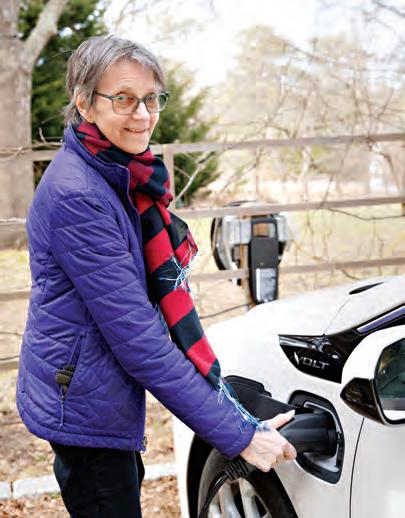
engine. The Volt was discontinued in 2019 so that GM could dedicate its resources to a new, all-electric model, the Chevy Bolt.
I asked Judy how John would have taken to electric vehicles, and she told me that he probably would have loved them. “John loved simplicity, and his favorite car was an old ’66 Volvo. But he was actually more of a motorcycle kind of guy. He loved driving his big Indian.”
Now that the Volt has been discontinued, I asked Judy what her next EV might be? Her answer came as a bit of a surprise.
“I intend to keep the Volt forever,” Judy said, “but as my family keeps growing — more grandchildren — I am looking to get a second vehicle relatively soon.” She’s always checking out alternative energy cars, and recently discovered the Ford Mustang, all electric Mach-e (first showcased in 2021), which, she says, is “probably my current choice. In high school, my car (aka my mother’s car)
was a ’67 Mustang but, surprisingly, this new version is an eco-friendly SUV.” She says she hasn’t test-driven one yet, but “it’s supposed to be very sporty, has great features and a sharp design. What more could a girl want?”
For the record, Judy believes she bought her 2018 Volt for about $30,000 in 2019.

Today, the new Chevy Bolt sells for about $30,000 as well. And the new Mustang EV is being offered in the midforties. But we’re not exactly sure of the “Buddha head capacity” of the Mustang.
The Facts
Last Starting Price Before Incentives: ($36,620).
Overall width without mirrors: 71.2 inches
Height: 56.4 inches
Electric Driving Range: 53 miles
0-60 MPH: 7.5 seconds
Cargo: 9.6 cubic feet.
Drivetrain: Front-wheel drive
Chevrolet no longer offers the Volt, but their Bolt is a similar all-electric car.

CRUISING WITH CURRIER • BELUSHI 47 marthasvineyard. .com
Judy Belushi and Geoff Currier catch up.
Judy charges her car in her driveway.
LOCAL
HEROES
We nominate John Abrams, whose career has been dedicated to sustainable housing and creating a cooperative corporate structure, and whose plans for retirement — also focused on housing affordability and worker cooperatives — are keeping him busier than ever.
John Abrams, the storied founder of South Mountain Company, retired last year. But retirement for John Abrams looks nothing like the ads on television, just as the company he founded with a friend in 1975 came to bear little resemblance to one with a standard corporate structure. Rather, South Mountain adopted a cooperative model — where employees own the company they work for. But that’s the thing about Abrams: He’s not your typical guy. And so none of what he does is, well, typical.
Instead, over the almost fifty years he’s been on this Island, Abrams has consistently reimagined the company he helped create and the community in which he’s made a home in extraordinary ways that will reverberate for generations to come.
Abrams spoke with Bluedot Living in February from his home on the Vineyard.
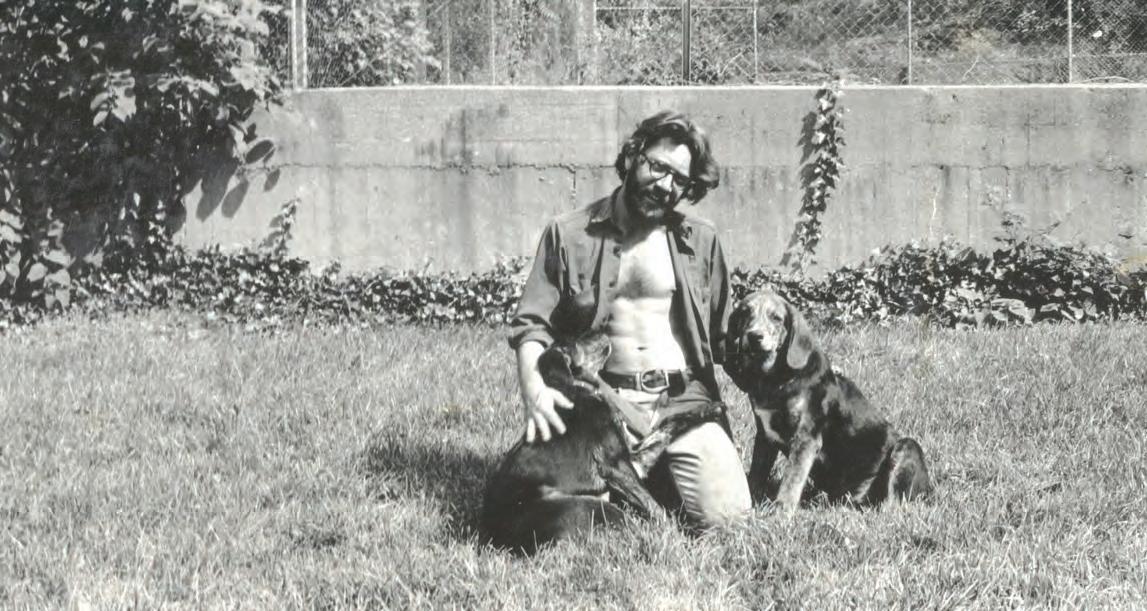
On getting his start
“I believe in trying things, and it’s fun for me to try things, even if they fail, because they don’t fail forever.”
He laughs when he talks of his early days with South Mountain: “We had this mentor who loved our work. Every summer, he’d come and we’d go around, and one time, he said, you know, the work is beautiful, are you making any money? And I said no, we pretty much lose money on everything we do. And he said, you have a really unique idea of subsidized housing for the rich. And that was like a dagger to my heart. And I decided at that point that I wanted to learn about business.”
On building
In his 20s, Abrams lived in a commune in Vermont. It was there, he says, that he learned the basics of building: “We didn’t know what the hell we were doing. We learned to build because we were living in these communes in remote places, and just had to learn how to put a roof over our heads. It became a passion for me. I just started designing and building by the seat of my pants, and learned gradually.”
On social entrepreneurship
“I’ve committed [to] helping companies become worker cooperatives, … When workplaces democratize, the employee learns the tools of community activism and collaborative practices. That, in turn, impacts the community and the issues that are important to the community.
On housing
“We have to do two essential things at once — we’ve got to house our workforce, and we’ve got to tame the short-term rental scourge. Our existing buildings have to be brought into the 21st century and kept in local ownership. … Really, what the housing issue is all about [is] people conservation, conserving the community. So there’s land conservation, there’s community preservation as well.”
On the Housing Bank
“We are basically shipping up to Boston, for the next two months,” Abrams says about his work on the proposed housing bank legislation, and the efforts to organize Vineyarders to head to Boston to encourage legislators to enact the bill. “I’m proud of all of us,” he says
Continued on page 39
LOCAL HERO 48 MARTHA’S VINEYARD /SPRING 2023
Interview by Leslie Garrett
John Abrams
John Abrams came to the Vineyard in the 70s, and founded South Mountain Company with a friend in 1975.
PHOTO COURTESY JOHN ABRAMS




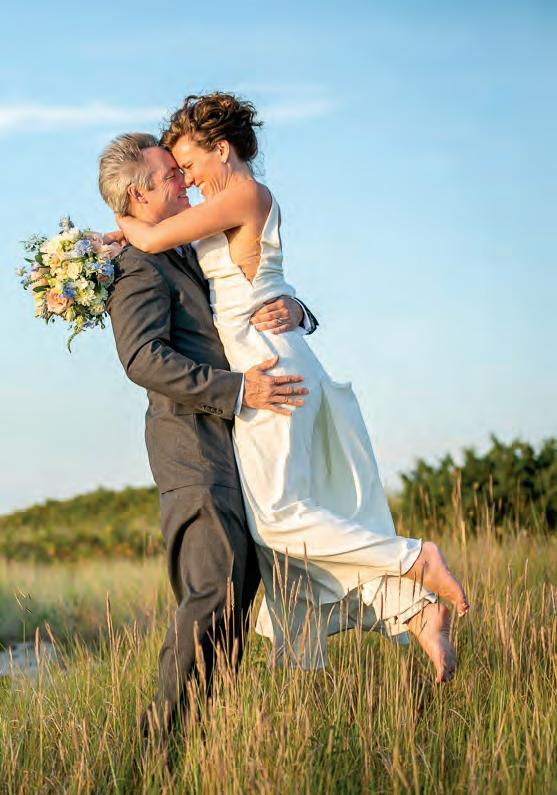


randibaird.com 508.505.5909
Martha’s Vineyard Family Portrait & Wedding Photographer
RED VALLEY ROAD, CHILMARK

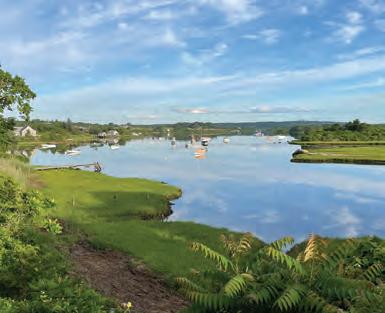
Offering 3.6 acres of open, rolling land with classic Chilmark stonewalls and beach plum bushes, this charming four-bedroom home with a pool, sits on a ridge and offers views that reach as far as Noman’s, the Atlantic, Nashaquitsa, the Elizabeth Islands and Menemsha. The property includes a garage for vehicle and boat storage. Squibnocket Beach is around the corner and private access onto Zack’s Cliffs beach in Aquinnah is included as part of Blacksmith Valley Association as well as deeded access to Quitsa Pond and a small dock where kayaks and a sunfish can be stored. Buyers can enjoy the house as it is or make plans to expand, renovate or rebuild in this exceptional location. Boating, swimming, fishing, and bird watching are right outside your door. Exclusively offered. Price upon request.
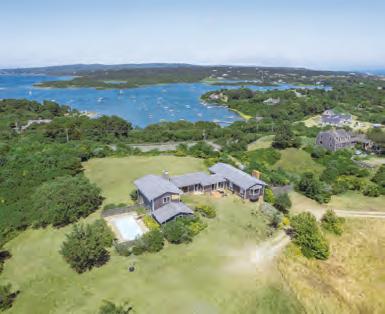
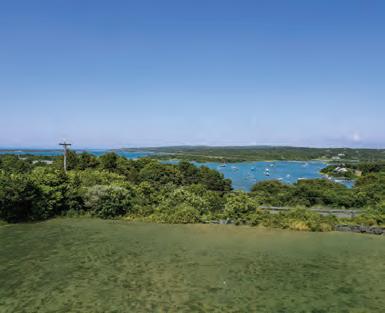
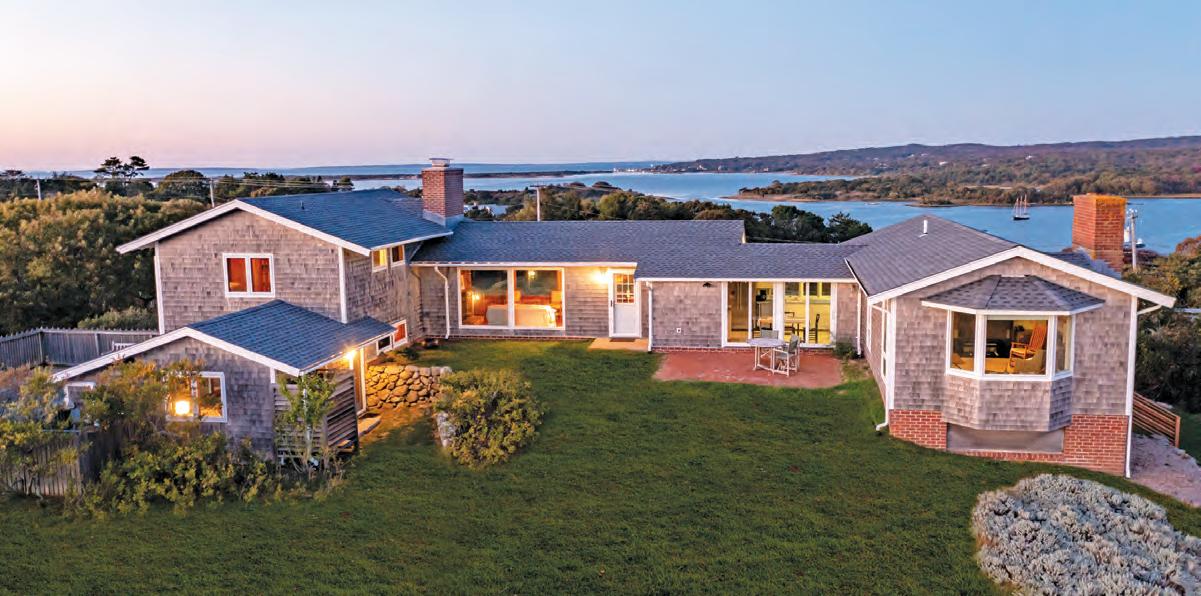
An
Properties
50 Years 504 State Road, West Tisbury MA 02575 Beetlebung Corner, Chilmark MA 02535 www.tealaneassociates.com
Independent Firm Specializing in Choice
for
508.645.2628 Chilmark
508.696.9999 West Tisbury








 By Sam Moore
By Sam Moore


 –Jamie Kageleiry
–Jamie Kageleiry























































 Story by Laura D. Roosevelt
Story by Laura D. Roosevelt



















































